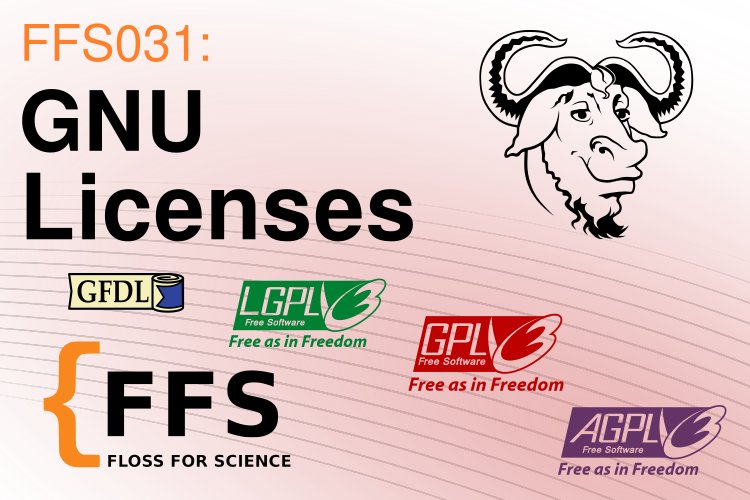
EP031 GNU licenses
Outline
Note : This interview was recorded in the summer of 2020. However, due to the pandemic we could not release the episode timely. Therefore, the current status of FSF and recent events are not discussed in this episode.
In episode 31, we interviewed Craig Topham from the Licensing and Compliance Team of the GNU Project about GNU software licenses. We started by discussing about his involvment in the compliance team at the Free Software Foundation (FSF) and what got him interested in the topic of free software. The portion of the interview centered around the GNU project with an emphasis on the GNU software licenses. We went through the GPL, LGPL, AGPL and GFDL licenses to explain some of their differences and why you may want to use one instead of another. We asked questions about the specificities of licensing your code in the context of scientific software and the issue with licenses proliferation. Some of the differences between the different versions of the GPL were presented later in the discussion to show the improvements brought in the version 3 in regard to the compliance and patent sections. We asked him about his take on the philosophical differences between GNU style licenses and the MIT/BSD licenses in regard to the debate between user and developper freedom. We followed by going through some myths surrounding the GNU licenses and a general discussion about freedom and privacy. We finished the interview with our usual quick questions.
About GNU project:
- What is GNU?
- The GNU Operating System
- About the GNU Operating System
- Overview of the GNU System
- The Structure and Administration of the GNU Project
About GNU licenses:
- This licensing list starts with the best summary of each of the licenses in the GPL family and beyond.
About Craig Topham:
Craig has been an Associate Member since 2007, and he came to work for the Free Software Foundation as a Copyright and Licensing Associate at the end of 2018. Prior to the FSF, Craig worked as a PC/Network Technician for the City of Eugene, Oregon for twelve years. Some of Craig’s FSF duties include: handling copyright assignments, GPL compliance for FSF-copyrighted works, and helping with the Respect Your Freedom program. Besides the desire to see free software thrive, Craig also envisions a world where everyone’s inner light shines bright.
Links
- Detailed history of the GNU Project
- FSF licensing and compliance team
- Respect your Freedom
- The Principles of Community-Oriented GPL Enforcement
- Free GNU/Linux distributions
- Seminars on free software licensing & GPL compliance
- Various Licenses and Comments about Them
- How to choose a license for your own work
- How to use GNU licenses for your own software
- Why you shouldn’t use the Lesser GPL for your next library
- Free Software Directory for the Free Software Directory IRC meetings, in the #fsf Freenode, Every Friday 12:00 PM to 3:00 PM EDT.
Addendum
Craig asked us to post some clarifications after he listend to the recording:
- 7:55, I utterly failed to mention an exclusive member benefit, our membership card which is a bootable USB Drive I think I was distracted when I heard “credit card”, weird.
- 8:11, Libreplanet was held virtually in both 2020 and 2021! Not the best joke, but I got a laugh!
- 22:29, I said “other programs” interacting with LGPL software, when I should have said “other code compiled together” with LGPL source code.
- 23:21, I messed up “Service as a Software Substitute” (SAASS), useful article.
- 30:51, I said GPL instead of GPLv3
- 36:56, I could have avoided saying, “that should be enough to cover it”, but instead emphasized useful programs like the FSFE’s REUSE.
- 37:39, I should not have said, “as far as legality goes” around the COPYING and README files in the source code. A more appropriate replacement would be, “as far as what is required by the GPL and other common practices”.
- 37:54, I misspoke. I meant to say that an author should register their work (source code) with the Copyright Office in order to defend ownership in court. They would not register it “as licensed under the GPL”, only that they are the author of the work.
Listen to this episode here or add our rss feed to your favourite podcast application.
You can also download this episode as MP3 or OGG.
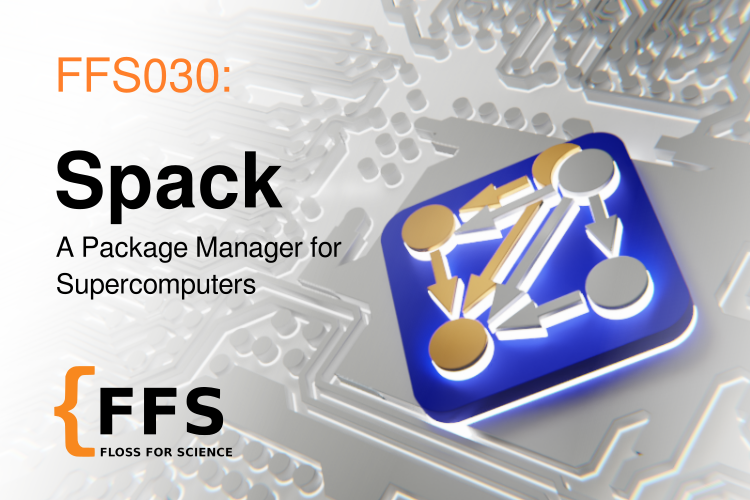
EP030 Spack: a package manager for supercomputers
Outline
In episode 30, we interviewed Todd Gamblin from the Lawrence Livermore National Laboratory about the Spack project. We discussed his current research project along with his involvement in Spack. We widely discussed the philosophy of Spack, some usage patterns, its capabilities for managing package management in HPC clusters as well as standalone computers and which operating systems it supports at the moment. Todd shared with us his opinion on the trend for containerized workloads to achieve reproducible science and why it may not be the goal we need to set. He highlighted for us the similarities and differences between EasyBuild and Spack as well as the origin of those differences. We finished the interview with our usual quick questions.
About Spack:
Spack is a package/dependency manager for scientific computing, with a
rapidly growing open source community. It aims to address many of the
complexities of native, multi-language, cross-platform dependency
management. With over 500 contributors from academia, industry, and
government laboratories, Spack has a wide range of use cases, from
small-scale development on laptops and clusters, to software release
management for the U.S. Exascale Computing Project (ECP), to software
deployment at large supercomputer facilities. Recently, Spack has added
features for devops and software development workflows, including
reproducible deployment. Spack virtual environments can be versioned and
reproduced with abstract spack.yaml files or concrete (exact)
spack.lock files. New releases of Spack include direct support for
creating containers, parallel/distributed builds, and Gitlab CI pipelines
for building environments.
About Todd Gamblin:
Todd Gamblin is a Computer Scientist in the Advanced Technology Office in Livermore Computing at Lawrence Livermore National Laboratory. His research focuses on scalable tools for measuring, analyzing, and visualizing parallel performance data. In addition to his research, Todd leads LLNL’s DevRAMP (Reproducibility, Analysis, Monitoring, and Performance) team and the Software Packaging Technologies project in the U.S. Exascale Computing Project. He also created Spack.
Links
Listen to this episode here or add our rss feed to your favourite podcast application.
You can also download this episode as MP3 or OGG.
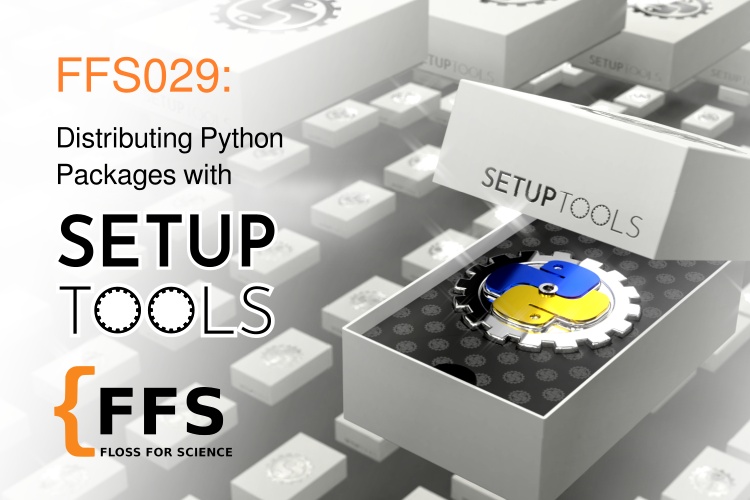
EP029 Distributing Python packages with setuptools
Outline
In episode 29, we interviewed Jason R Coombs from the setuptools project. We started with a discussion about his background and his interest for Python and other programming languages. Following that, we had a thorough discussion about setuptools. We covered topics such as how he got involved in the project, the nature and composition of a Python package, why packaging your code can be important even for small projects, the hidden complexity of binary packages in the Python Package Index and how to maintain compatibility between Python versions. We also had a brief segment about the security aspects of Python packages. He informed us about how you could start contributing to the project and where to discuss Python packaging. We then followed with a general discussion about FLOSS in science and the problem of long-term maintenance in academia. We concluded the interview with our usual quick questions.
About Python setuptools:
Setuptools is the dominant way to build Python packages for distributing that functionality to other users via pip and the Python Package Index. Setuptools support simple, pure-Python packages all the way to complex packages requiring compilation (such as from C or Rust) and features like entry points and console scripts.
About Jason R. Coombs:
Jason has been a Python enthusiast for over two decades and a contributor to open-source for just as long. As a core contributor to Python and maintainer of over 140 packages in PyPI, Jason has worked tirelessly to streamline packaging workflows and automate best practices around package distribution. Jason has used Python across government, commercial, and non-profit sectors to produce enterprise-grade software on Python. Jason is currently a Site Reliability Manager at Google in Pittsburgh.
Links
Related epsiodes
Listen to this episode here or add our rss feed to your favourite podcast application.
You can also download this episode as MP3 or OGG.
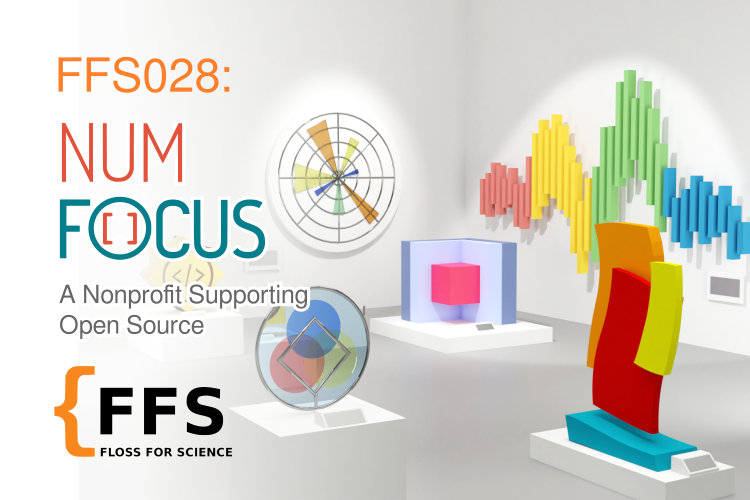
EP028 NumFocus: A Nonprofit Supporting Open Source
Outline
In episode 28, we interviewed Leah Silen from the NumFocus organization. She introduced us to the goals and the mission of the organization. We then had a discussion about the different levels of support provided by the organization to its member projects. She informed us about the legal, financial, technological and logistical support that can be provided by NumFocus. Following that, we asked her about the revenue sources of the organization as well as the possible influence from the corporate sponsors over the decisions and governance of the organization. We also discussed of the requirements to become part of NumFocus including details about the application process. We had a brief discussion about the history of the project and the evolution of the scope of projects that are part of the organization. After discussing the governance of the organization, we concluded the interview with our usual questions.
About NumFocus:
The mission of NumFOCUS is to promote open practices in research, data, and scientific computing by serving as a fiscal sponsor for open source projects and organizing community-driven educational programs. We envision an inclusive scientific and research community that utilizes actively supported open source software to make impactful discoveries for a better world. NumFOCUS provides a stable, independent, and professional home for the open source projects powering contemporary scientific inquiry and business processes. We aim to ensure that funding and resources are available to sustain projects in the scientific data stack over the long haul. NumFOCUS connects the community with expertise from knowledgeable and trusted sources.
- Our Corporate Sponsorship Program provides a vehicle for communication and collaboration between projects and industry.
- Our Research Partnerships Program provides guidance on how educational and research institutions can better support scientific software development, maintenance, research, and advancement.
- Our Diversity & Inclusion in Scientific Computing (DISC) Program provides guidance on how to best promote diversity and inclusion within open source data science communities. We believe that diversity drives innovation and discovery.
- Our PyData global network is a community-driven educational program that promotes discussion of best practices, new approaches, and emerging technologies for data management, processing, analytics, and visualization.
About Leah Silen:
Leah has been with NumFOCUS from its beginning in 2012, working with the founding board members to write the application for NumFOCUS’s nonprofit status. She worked in the nonprofit sector as a Public Relations and Program Director with a focus on community relations and fundraising. Leah has also volunteered and sat on several boards of nonprofit organizations.
Links
Listen to this episode here or add our rss feed to your favourite podcast application.
You can also download this episode as MP3 or OGG.
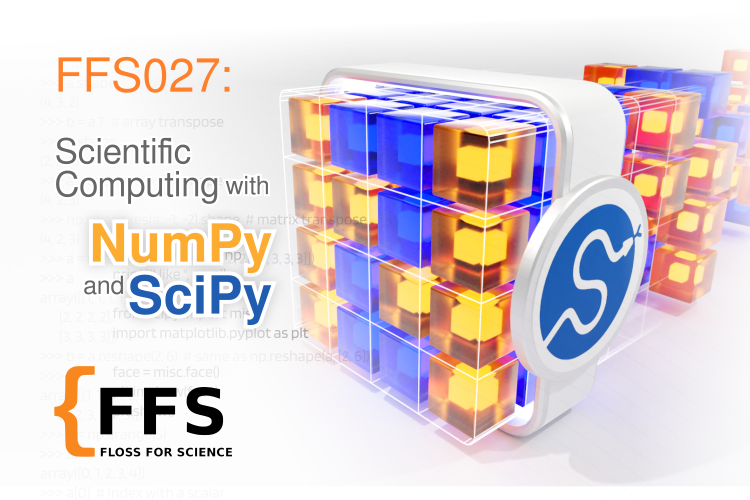
EP027 Scientific Computing with SciPy and NumPy
Outline
In episode 27, we interviewed Ralf Gommers from the NumPy and SciPy projects. We started our discussion by talking about his past research experience as a physicist and his transition to open source software and programming. This led him to get involved in projects such as PyWavelets, NumPy and SciPy. Following that, we had a great discussion about NumPy, its many features, its target audience and its performance. We learned why NumPy is not included in Python’s standard library and its overlap with Scipy. We also compared the combination of Matlab to NumPy and Python and how users could transition to this open source solution. We then had a brief discussion about SciPy and the features it provides. Ralf informed us of the positive results from Google’s previous Summer of Code and Season of Docs participations. We discussed how to reach the project and the many kinds of contributions that they are looking for. We talked about the importance of FLOSS for science and attribution of research output. We finished the interview with our classic quick questions and a reflection from Ralf about the need for more sustainability in open source software development as volunteer effort may not be sufficient in the future.
About NumPy:
NumPy is the fundamental package for numerical and scientific computing with Python. It provides an N-dimensional array data structure and a large set of numerical functions that operate on it. Its array computing concepts – vectorization, broadcasting, indexing, and universal functions (ufuncs) – are used throughout the scientific Python ecosystem, and have also inspired similar libraries in other programming languages. The NumPy API and concepts have been adapted to other Python libraries, such as Dask and Xarray for distributed computing and PyTorch and CuPy for GPU computing.
About SciPy:
SciPy is a library of numerical routines for the Python programming language that provides fundamental building blocks for modeling and solving scientific problems. SciPy includes algorithms for optimization, integration, interpolation, eigenvalue problems, algebraic equations, differential equations and many other classes of problems; it also provides specialized data structures, such as sparse matrices and k-dimensional trees. SciPy is built on top of NumPy, which provides array data structures and related fast numerical routines, and SciPy is itself the foundation upon which higher level scientific libraries, including scikit-learn and scikit-image, are built.
About Ralf Gommers:
Ralf has been deeply involved in the SciPy and PyData communities for over a decade. He is a maintainer of NumPy, SciPy and PyWavelets, and has contributed widely throughout the SciPy ecosystem. Ralf is currently the SciPy Steering Council Chair, and he served on the NumFOCUS Board of Directors from 2012-2018.
Ralf directs Quansight Labs, which consists of developers, community managers, designers, and documentation writers who build open-source technology and grow open-source communities around data science and scientific computing projects. Previously Ralf has worked in industrial R&D, on topics as diverse as MRI, lithography and forestry.
Links
- NumPy website
- NumPy documentation
- NumPy: the absolute basics for beginners
- NumPy development
- NumPy on Twitter
- SciPy website
- SciPy documentation
- SciPy development
- NumFOCUS projects
- Ralf on GitHub
- Ralf on Twitter
- Ralf’s blog
Listen to this episode here or add our rss feed to your favourite podcast application.
You can also download this episode as MP3 or OGG.
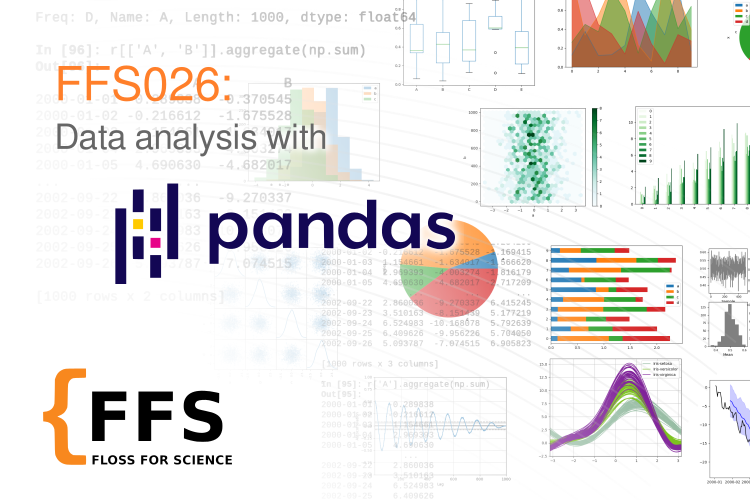
EP026 Data Analysis with pandas
Outline
In episode 26, we interviewed Bhavani Ravi about the Python data analysis library pandas. After a brief introduction about her use of machine leaning models for pharmaceutical research, we talked extensively about pandas. She told us how much pandas is important for her everyday tasks and the strict quality standards of the project. We talked about the features provided by pandas and its compatibility with other Python libraries. We then discussed the importance of FLOSS in her industry and how they are contributing back to important projects. She share with us her experience as a first time contributor to pandas and how to find good first time issues for newcomers. We finished the interview with out usual quick questions.
About Pandas:
pandas is an open source, BSD-licensed library providing high-performance, easy-to-use data structures and data analysis tools for the Python programming language.
pandas is a NumFOCUS sponsored project. This will help ensure the success of development of pandas as a world-class open-source project, and makes it possible to donate to the project.
About Bhavani Ravi:
Bhavani Ravi is a Research Engineer at Saama Technologies working on deploying clean, scalable and quality machine learning models to production systems. Even though her career is enough to keep her busy, she likes to pay forward all the motivation and support she received by running WomenTechMakers chennai community, where she enables a forum for talented women to explore the male-dominated tech world. Outside of development and communities, she is a blogger, bibliophile, wannapreneur, and constant learner. You can find more about her at bhavaniravi.com
Links
- The Software Sustainability Institute
- Bhavani on Twitter
- Bhavani Ravi
- Datacamp - Getting Started with Pandas
- Pandas from Scratch
- Pandas Zero to Hero blog series
Listen to this episode here or add our rss feed to your favourite podcast application.
You can also download this episode as MP3 or OGG.

EP025 FreeCAD, a 3D Parametric Modeler
Outline
In episode 25, we interviewed Kurt Kremitzki about the paramatric 3D modelling tool FreeCAD. After discussing his previous experiences with CAD software and how he got involved in the FreeCAD project, we asked him about the current development status of the project before digging deeper into a few of the workbenches offered by FreeCAD. We also compared FreeCAD to LibreCAD and QCAD for applications only requiring 2D drawing instead of parametric 3D models and we discussed about compatibility with commercial CAD systems and standard exchange file formats. We were pleased to learn about the development status of a stable topological naming engine paving the way for the integration of an official assembly workbench in future releases. We then discussed about the spread of FreeCAD in companies and universities as well as ways to contribute to the FreeCAD project. We finished the interview with out usual quick questions and with a mention of their recent presentions at FOSDEM 2020.
About FreeCAD:
FreeCAD is a cross-platform parametric 3D modeler. Architecturally, it is a Qt application with a C++ core extended with Python, and uses a modular, workbench-based approach. Besides traditional CAD functionality, FreeCAD offers computer-aided engineering and manufacturing features, integrating with other open source projects like OpenFOAM (CFD), Gmsh & Netgen (meshers), CalculiX & Elmer (FEA solvers), IFCOpenShell (BIM), OpenCAMLib (CAM/CNC) as well as integration with KiCAD for electronics design automation.
About Kurt Kremitzki:
Kurt Kremitzki is a biosystems engineer, an admin/developer for the FreeCAD project, and a Debian Maintainer on the Science Team. During the day, he works as a Scientific Software Developer for Enthought, a digital transformation company at the heart of the scientific Python ecosystem.
Links
- FreeCAD
- Debian Science
- Enthought
- Assembly 3 Workbench
- Finite element modeling section of FreeCAD’s forums
- CAM/CNC section of FreeCAD’s forums
- FreeCAD subreddit with highlights from the forums
- FOSDEM talk: Open-source design ecosystems around FreeCAD
- Kurt’s blog
- Kurt on Twitter
Related epsiodes
Listen to this episode here or add our rss feed to your favourite podcast application.
You can also download this episode as MP3 or OGG.
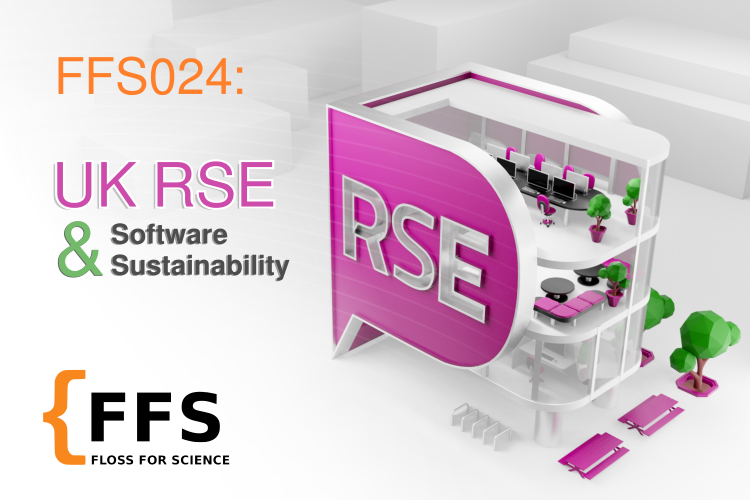
EP024 UK RSE and Software Sustainability
Outline
In episode 24, we interviewed Simon Hettrick Professor at the University of Southampton in the UK. We started the discussion with him by asking about his transition from deveoppin high-power lasers to founding the research software engineers (RSE) association and how his experiences got him in his current position. We then discussed about the roles of RSE in research and how funding for RSE evolved over the past. The discussion went on about the RSE association, its growth over time, branches in other countries and local events. We discussed that the relation between FLOSS and more sustainable research software is not always clear and more work is needed in that area. After talking with him about the lack of sufficient preparation that students receives during their undergrad studies in regard to the tools needed to tackle research software development we finished with our usual quick questions.
About the Society of Research Software Engineering:
The Society of Research Software Engineering was founded on the belief that a world which relies on software must recognise the people who develop it. Its mission is to establish a research environment that recognises the vital role of software in research
About Simon Hettrick:
Professor Simon Hettrick is Deputy Director of the Software Sustainability Institute, and co-Director of the Southampton Research Software Group.
Simon is responsible for research and campaigning at the Institute. He works with stakeholders from across the research community to develop policies that support research software, the people who develop that software and the researchers who rely on it. Simon’s research focusses on the use of software in the research community with the aim of understanding practices and demographics.
Simon is a passionate advocate for Research Software Engineers. He orchestrated the campaign to gain recognition for this group, which has since grown into substantial international community. He was the founding chair of the UK’s Association of Research Software Engineers and is now a Trustee of the Society of Research Software Engineering. He has been treasurer of the RSE conference since it began in 2016.
Simon is a member of the UKRI expert group on e-Infrastructure. He has a background in physics and patent law.
Links
- The Software Sustainability Institute
- The University of Southampton
- The Society of Research Software Engineering
- Simon on Twitter
Listen to this episode here or add our rss feed to your favourite podcast application.
You can also download this episode as MP3 or OGG.
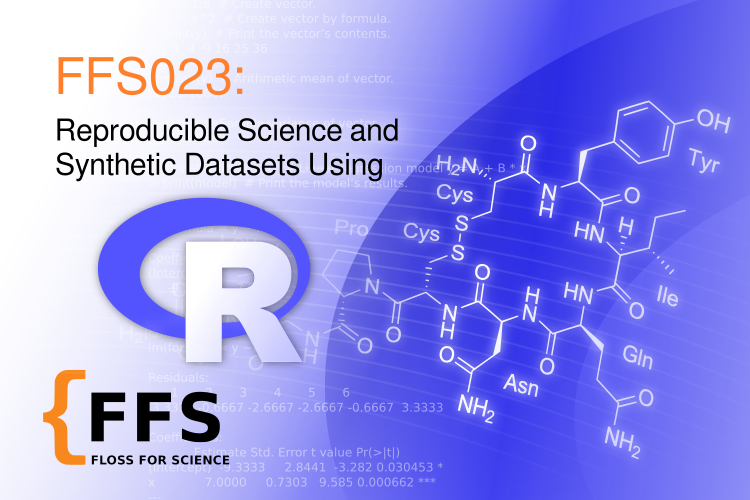
EP023 Reproducible Science and Synthetic Datasets Using R
Outline
In episode 23, we interviewed Dan Quintana from the University of Oslo. We started the discussion with him by asking the link between all his subjects of interest and where R fits into his workflow. We then had an extensive discussion about R including his must have R packages and the synthpop package for generating synthetic datasets. We then widened the discussion and talked about the multiple facets of open science and reproducibility. Dan then talked about what he sees as one of the next big challenge of science. We finished the interview with our usual quick questions.
About Dan Quintana:
Dan Quintana is a Senior Researcher at the Norwegian Center for Mental Disorders Research at the University of Oslo. While his primary research focus is in the field of biological psychiatry, he also works in the in the emerging discipline of meta-research, whose goal is to evaluate and improve research practices. He also co-hosts ‘Everything Hertz’, a bi-monthly podcast on methodology, scientific transparency, and research life in the biobehavioral sciences.
Links
- Dan’s Binder analysis
- Chen, Zhanqi, et al. “Prolonged milk provisioning in a jumping spider.” Science 362.6418 (2018): 1052-1055, DOI: 10.1126/science.aat3692
- Learning statistics with R: A tutorial for psychology students and other beginners by Danielle Navarro, Link
- That free data viz book by Claus Wilke, Link
- University of Glasgow Psychology R resources
- Arslan, Ruben C., et al. “Using 26,000 diary entries to show ovulatory changes in sexual desire and behavior.” Journal of Personality and Social Psychology (2018), http://dx.doi.org/10.1037/pspp0000208
- Quintana, Daniel. “Synthetic datasets: A non-technical primer for the biobehavioral sciences.” (2019), DOI: 10.31234/osf.io/dmfb3
Related episodes
- FFS004 - Reproducible science with Rocker
- FFS015 - Reproducible Research in Archaeology with rrtools
- FFS020 - Peer-Reviewed Pulication of Research software
Listen to this episode here or add our rss feed to your favourite podcast application.
You can also download this episode as MP3 or OGG.
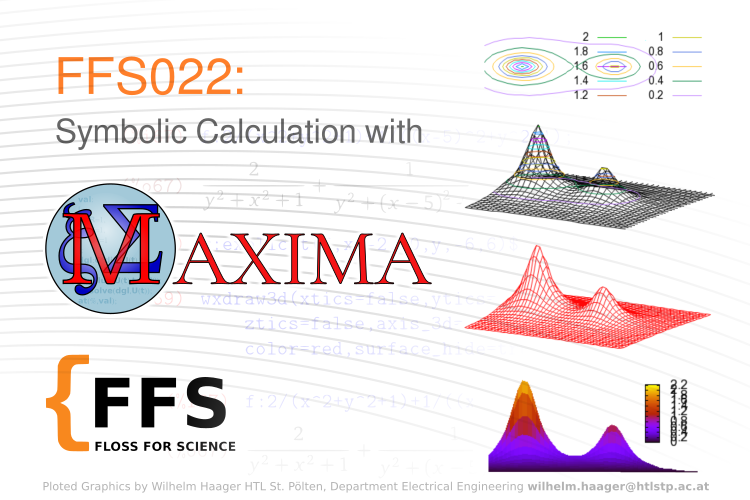
EP022 Symbolic Calculation with Maxima
Outline
In episode 22, we interviewed Robert Dodier from the Maxima project. After a brief introduction and a presentation of Robert’s current uses for Maxima he introduced what is Maxima and what can be achieved with it. We discussed some core concepts of Maxima’s language as well as how to access the documentation within the software to help users. Then discussion went on about the interesting origin story of Maxima and its origin as a tool for AI. We then talked about the current state of the project and how can someone provide help. As well as our usual quick questions, we had an interesting discussion about the social aspects within FLOSS and other self-organized projects.
About Robert Dodier:
Robert Dodier has a background in mathematics, computer science, and engineering. At present he’s writing software for a medical app for smart phones. In times past he has worked on machine learning, agent systems, and forecasting electrical demand, among other topics. He has a special interest in Bayesian inference and decision analysis.
About Maxima:
Maxima is derived from the Macsyma system, developed at MIT in the years 1968 through 1982 as part of Project MAC. MIT turned over a copy of the Macsyma source code to the Department of Energy in 1982; that version is now known as DOE Macsyma. A copy of DOE Macsyma was maintained by Professor William F. Schelter of the University of Texas from 1982 until his death in 2001. In 1998, Schelter obtained permission from the Department of Energy to release the DOE Macsyma source code under the GNU Public License, and in 2000 he initiated the Maxima project at SourceForge to maintain and develop DOE Macsyma, now called Maxima.
Links
Listen to this episode here or add our rss feed to your favourite podcast application.
You can also download this episode as MP3 or OGG.
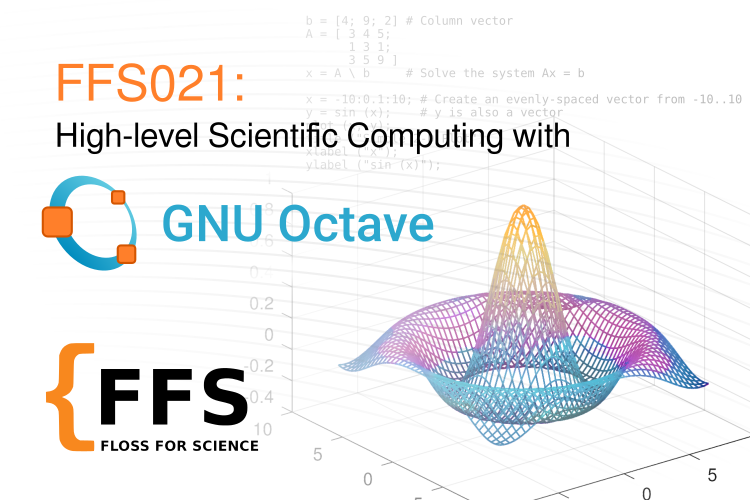
EP021 High-level Scientific Computing with GNU Octave
Outline
In episode 21, we interviewed Juan Pablo Carbajal, an Argentinian physicist currently working as a postdoctoral researcher in the Department of Urban Water Management at the ETH domain in Switzerland. We had a great discussion about GNU Octave and how it can help scientists. We compared its core functions and its expandability through packages to its commercial equivalent Matlab and its toolboxes. An interesting feature of GNU Octave that we explored with Juan is the possibility to migrate code from Matlab directly to GNU Octave and to a certain point maintain code compatible with both. Juan shared with us that since the introduction of an integrated GUI in 2015, he noticed a continuous growth in popularity for the project. We then discussed about a few of the reasons why companies are interested by GNU Octave and why universities should teach using free/libre software. Before asking our usual quick questions, Juan talked with us about the reasons why FLOSS is important for science and the importance of exposing non-FLOSS users to the benefits of FLOSS.
About Juan Pablo Carbajal:
Juan Pablo is a physicist from Argentina, currently living in Switzerland. He has been using GNU Octave for more than 15 years. GNU Octave is one of the FLOSS tools he uses for research and development (applied complex systems). He is also a promoter of education and training using FLOSS. He provides GNU Octave technical training at CERN, and in his small non-profit, which also promotes programming and robotics among teenagers using FLOSS. In his free time he contributes to GNU Octave, maintains a few small packages, and provides help in the mailing list. You can know more about Juan Pablo on his website.
About GNU Octave:
GNU Octave is a high-level language, primarily intended for numerical computations using a language that is mostly compatible with Matlab. Octave has extensive tools for solving common numerical linear algebra problems, finding the roots of nonlinear equations, integrating ordinary functions, manipulating polynomials, and integrating ordinary differential and differential-algebraic equations. It is easily extensible and customizable via user-defined functions written in Octave’s own language, or using dynamically loaded modules written in C++, C, Fortran, or other languages.
Links
- GNU Octave home page
- Octave Forge: packages for GNU Octave
- GNU Octave’s wiki
- GPU acceleration for GNU Octave
- GNU Octave virtual classroom (Spanish)
- Publications using Octave
- Introduction to GNU Octave (2nd Edition)
- Octave’s projects page
- Summer of code ideas
Listen to this episode here or add our rss feed to your favourite podcast application.
You can also download this episode as MP3 or OGG.
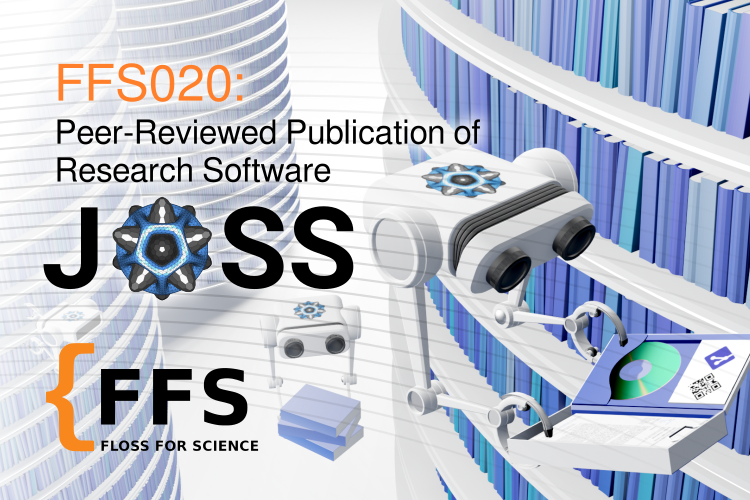
EP020 Peer-reviewed Publication of Research Software
Outline
In episode 20, we interviewed Arfon Smith, Editor-in-chief of the Journal of Open Source Software (JOSS) and Head of Data Science at the Space Telescope Science Institute. We talked with him about the creation of JOSS and its role in peer reviewed publications of research software. He described to us how to start a peer reviewed scientific journal and the challenges and competition that he faces. We chatted about how, by using automation, reusing existing tools and staying nimble, JOSS manages to publish with low operational costs. We also discussed about the submission process and what is reviewed during the peer review. Finally, we had a discussion about the importance of FLOSS and in science and how science and FLOSS could inspire each other.
About Arfon Smith:
Arfon Smith is the Head of the Data Science Mission Office at Space Telescope Science Institute in Baltimore. Previously he was at GitHub, helping to bring open source to academia.
A lapsed academic with a passion for new models of scientific collaboration, he’s used big telescopes to study dust in space, built sequencing pipelines in Cambridge and has engaged millions of people in online citizen science by co-founding the Zooniverse.
He’s also been known to publish the odd paper and has also accidentally built a few academic journals in his time too including, most recently, the Journal of Open Source Software.
About Journal of Open Source Software:
The Journal of Open Source Software (JOSS) is an open source, developer-friendly journal for research software packages. It’s designed to make it as easy as possible to create a software paper for your work. If a piece of software is already well documented, then paper preparation (and submission) should take no more than an hour. The primary purpose of a JOSS paper is to enable citation credit to be given to authors of research software and we have a rigorous peer review process and a first-class editorial board (http://joss.theoj.org/about#editorial_board) highly experienced at building (and reviewing) high-quality research software.
Links
- Announcement blog post
- Cost model
- Chatops publishing
- Journal of Open Source Software (JOSS): design and first-year review
Listen to this episode here or add our rss feed to your favourite podcast application.
You can also download this episode as MP3 or OGG.
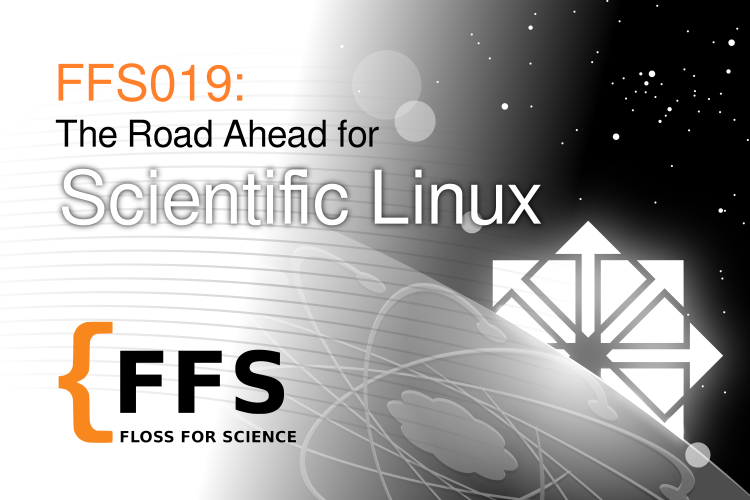
EP019 The Road Ahead for Scientific Linux
Outline
In episode 19, we interviewed Glenn Cooper the Head of experiment computing department at Fermilab about the history and future of the linux distribution Scientific Linux. The discussion started with a brief overview of current research activities at Fermilab. When then extensively talked about Scientific Linux, its goals, the reason why it was started and what made it successful. Glenn made a good argument about the need for a stable software platform in science. We then switched topics and discussed about the recent announcement in regard to the end of the project and the motivations for that. We then talked about the transition to CentOS at Fermilab and CERN and the upgrade path for current users. We concluded the interview with our usual quick questions.
About Scientific Linux:
Scientific Linux is a Linux distribution intended to provide a platform for scientific computing and specifically for high-energy physics computing. Because experiments in that field can run for years or even decades, a stable operating system that allows for security patching and major bug fixes, but otherwise remains stable, so that physics results do not have to be re-validated frequently is needed. The first version, Scientific Linux 3, was based on Red Hat Enterprise Linux 3 and was released in 2004 in conjunction with CERN. Scientific Linux has been widely adopted by physics labs like Fermilab, by many university departments, and by others in the community.
About Glenn Cooper:
Glenn Cooper started as an astronomer and taught physics and astronomy at several colleges and universities. He moved into computing, winding up at Fermilab, “America’s particle physics and accelerator laboratory”. He is currently leading a department that manages most of the computers used by experiments at Fermilab, as well as many used by the CMS experiment at the CERN laboratory in Europe. Besides managing computers and their operating systems, they also manage batch computing software on many of the computers. Finally, they build, distribute, and support Scientific Linux.
Links
Listen to this episode here or add our rss feed to your favourite podcast application. You can also download this episode as MP3 or OGG.
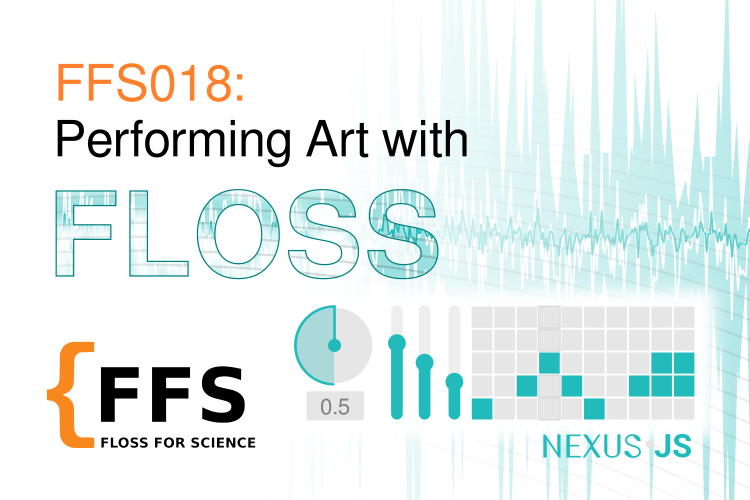
EP018 Performing Arts with FLOSS
Outline
In episode 18, we interviewed Jesse Allison an Associate Professor of Experimental Music & Digital Media at Louisiana State University. We had a great discussion about his work to expand the experience and interactivy of music and sounds. He shared with us his view on how sciences and arts intersect in his projects. He listed some of the tools he uses to create sounds and how these can be applied to create sonic intervention. We had a chat about his past experiences regarding open source software and running a business based on it. We also questioned him whether or not anyone could or even should start creating music. The episode concludes with a small audio sample from his 2013 TEDx talk.
About Jesse Allison:
Jesse Allison is a leader in sonic art technology, thought, and practice. Dr. Allison holds the position of Associate Professor of Experimental Music & Digital Media at Louisiana State University. As part of the Cultural Computing focus of the Center for Computation & Technology, he performs research into ways that technology can expand what is possible in the sonic arts. Prior to coming to LSU, he helped to found the Institute for Digital Intermedia Art at Ball State University and Electrotap
Links
- Soundcloud: Some samples of Jesse’s music
- Nexus: Rails applications and Javascript canvas based UI objects for Distributed Performance systems
- Nexus-js
- Jesse’s personal webpage
- Jamoma Modular Patching and Programming for Realtime Media
- TEDxLSU: Sonic Interventions
Listen to this episode here or add our rss feed to your favourite podcast application.
You can also download this episode as MP3 or OGG.
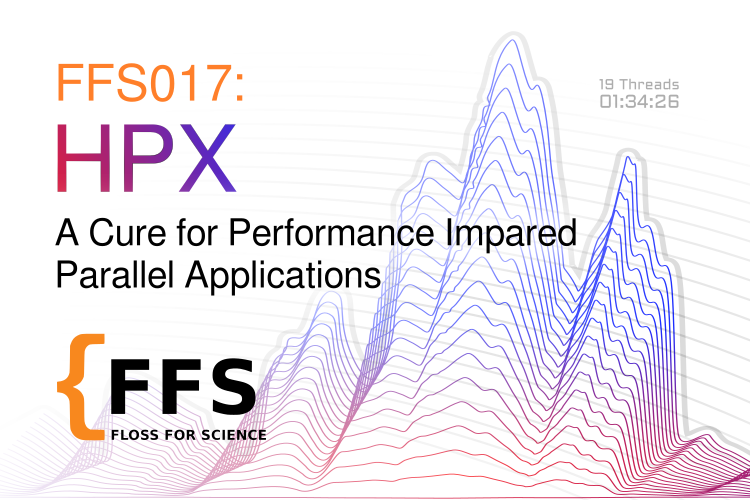
EP017 HPX: A cure for performance impaired parallel applications
Outline
In episode 17, we interviewed Adrian Serio the Scientific Program Coordinator of the STELLAR group about the C++ Standard Library for Concurrency and Parallelism (HPX). We started with a general discussion about parallel computing, where it comes from, where it is going and what can we still expect to gain. We then clarified what are C++ standards and how HPX is developed to be standard compliant. HPX was compared to other parallelism libraries such as MPI and we learned that HPX is a foundation to develop other software for domain specific applications. Adrian informed us how HPX can be used to take advantage of hardware accelerators such as Intel Xeon Phi or GPUs. We looked at the inception of the project and the sources of contributions to the project
About Adrian Serio:
Adrian Serio is the Scientific Program Coordinator for the STELLAR group at Louisiana State University. In this role, he assists in the development of HPX, a distributed C++ runtime system for parallelism and concurrency. Adrian was surprised to find himself working in HPC after graduating with a bachelor degree in biological engineering in 2011. Nevertheless, he loves working in a university setting where he gets exposed to cutting edge research and work with an international team of collaborators.
About the C++ Standard Library for Concurrency and Parallelism (HPX):
High Performance ParalleX (HPX) is an environment for high performance computing. It is currently under active development by the STELLAR group at Louisiana State University. Focused on scientific computing, it provides an alternative execution model to conventional approaches such as MPI. HPX aims to overcome the challenges MPI faces with increasing large supercomputers by using asynchronous communication between nodes and lightweight control objects instead of global barriers, allowing application developers to exploit fine-grained parallelism.
Links
Listen to this episode here or add our rss feed to your favourite podcast application.
You can also download this episode as MP3 or OGG.
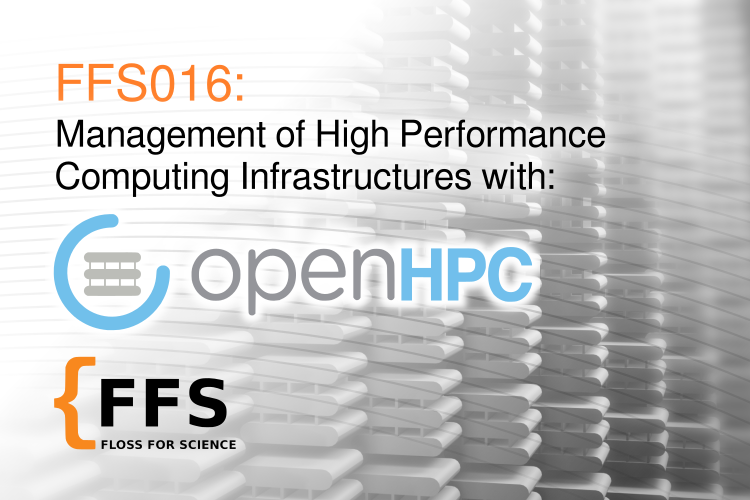
EP016 Management of High Performance Computing Infrastructures with OpenHPC
Outline
For episode 16, we interview the Research Associate Professor Karl W. Schulz. The episode starts with a discussion about High Performance Computing and how OpenHPC facilitate the managment of computing ressources. We then open the discussion towards open source tools, how they became so important for HPC and the their importance for open science. We also discussed about the inception of the OpenHPC project and its governance structure. We end the interview with our usual question in addition to a totally new one.
About OpenHPC:
OpenHPC is a collaborative, community effort that initiated from a desire to aggregate a number of common ingredients required to deploy and manage High Performance Computing (HPC) Linux clusters including provisioning tools, resource management, I/O clients, development and administration tools, and a variety of scientific libraries. Packages provided by OpenHPC have been pre-built with HPC integration in mind with a goal to provide re-usable building blocks for the HPC community. OpenHPC was formalized as a Linux Foundation collaborative project in June 2016 and has over 35 institutional members from academia, national labs, and industry.
About Karl W. Schulz:
Karl W. Schulz received his Ph.D. from the University of Texas (UT) in 1999. After completing a one-year post-doc, he transitioned to the commercial software industry working for the CD-Adapco group as a Senior Project Engineer to develop and support engineering software in the field of computational fluid dynamics (CFD). After several years in industry, Karl returned to UT in 2003, joining the research staff at the Texas Advanced Computing Center (TACC), a leading research center for advanced computational science, engineering and technology. During his 10-year tenure at TACC, Karl was actively engaged in HPC research, scientific curriculum development and teaching, technology evaluation and integration, and strategic initiatives serving on the Center’s leadership team. Karl also served as the Chief Software Architect for the PECOS Center within the Institute for Computational Engineering and Sciences (ICES), a research group focusing on the development of next-generation software to support multi-physics simulations and uncertainty quantification.
In 2014, Karl joined the Data Center Group at Intel where he led the technical design and release of OpenHPC. He continues to remain actively engaged in the project and is currently serving as the overall Project Lead. In 2018, Karl returned to UT as a Research Associate Professor in an interdisciplinary role within ICES and the Women’s Health Department at the Dell Medical School.
Links
Listen to this episode here or add our rss feed to your favourite podcast application.
You can also download this episode as MP3 or OGG.
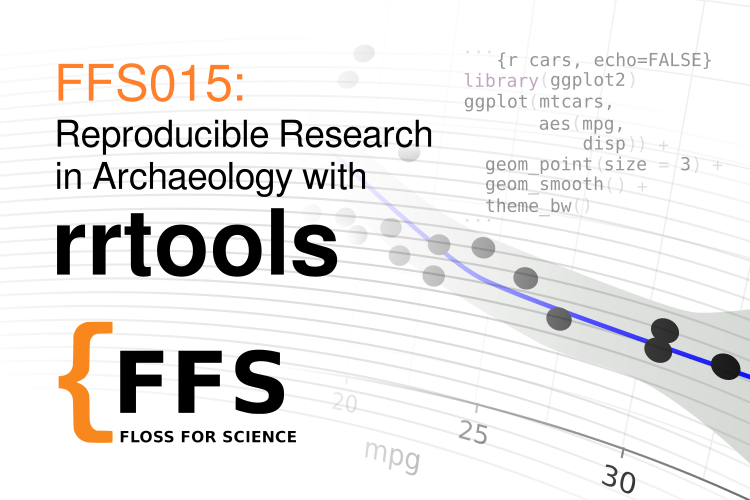
EP015 Reproducible Research in Archaeology with rrtools
Outline
For episode 15, we interview the Associate Professor of Archaeology Ben Marwick. We start our discussion with an overview of some FLOSS tools he uses and how much FLOSS are used in archaeology. He shares with us his experience in regard to working completely in the open with GitHub and his hope that open science will become the norm in the future. We also discuss about rrtools and his propositions on how to greatly improve the reproducibility of science. As a closing though he shares with us his arguments why early career researchers should invest time to learn and transition to FLOSS tools.
About Ben Marwick:
Ben Marwick is an Associate Professor of Archaeology at the University of Washington, Seattle. His other local affiliations include the eScience Institute, the Burke Museum, the Center for Statistics and Social Sciences, the Quaternary Research Center, and the Southeast Asia Center. Ben’s main research activities combine models from evolutionary ecology with analyses of archaeological evidence to investigate past human behaviour. Specific interests include the hominin colonisation of mainland Southeast Asia, forager technologies and ecology in Australia, mainland Southeast Asia and elsewhere. He also analyses how archaeology engages with local communities and popular culture. Ben has a special interest in techniques and methods for reproducible research, especially using open source software. To support this, he has lead the development of the rrtools package for the R programming language, which simplifies many of the tasks of writing a reproducible manuscript.
Links
- rrtools: Tools for Writing Reproducible Research in R
- Marwick, B. J Archaeol Method Theory (2017) 24: 424. https://doi.org/10.1007/s10816-015-9272-9
- Marwick B, Boettiger C, Mullen L. 2018. Packaging data analytical work reproducibly using R (and friends) PeerJ Preprints 6:e3192v2 https://doi.org/10.7287/peerj.preprints.3192v2
- Eglen SJ, Marwick B, Halchenko YO, Hanke M, Sufi S, Gleeson P, Silver RA, Davison AP, Lanyon L, Abrams M, Wachtler T. Toward standard practices for sharing computer code and programs in neuroscience. Nature neuroscience. 2017 May 25;20(6):770.
Listen to this episode here or add our rss feed to your favourite podcast application.
You can also download this episode as MP3 or OGG.

EP014 Gimp Your Images for Publication
Outline
In episode 14, we interview Pat David a Free Software advocate, occasional photographer and engineer about the GIMP project. We talked about how GIMP can be used by scientists to enhance their images for their publications. Also, Pat shared with us his strong opinions regarding scientific communication and why free software matters. You will also learn a few interesting trivia about the origins of the GIMP project, including the content of the original announcement email.
About GIMP:
The GNU Image Manipulation Program, GIMP, has been a fixture of the Free Software world since 1995. It has long been a standard cross-platform tool available to FL/OSS users for manipulating graphics and images, and is also the namesake of the GTK project (the GIMP Toolkit). For over twenty years GIMP has been available to help users create and modify all manner of graphics for scientific computing, photography, and digital arts.
About Pat David:
Pat David is a Free Software advocate, occasional photographer, and digital dabbler. He has been a member of the GIMP team for many years now, and did the recent re-design of the GIMP website. He is also the founder of the Free Software photography community PIXLS.US. His time is usually spent annoying, then helping, various FL/OSS projects (in that order).
Links
Listen to this episode here or add our rss feed to your favourite podcast application.
You can also download this episode as MP3 or OGG.
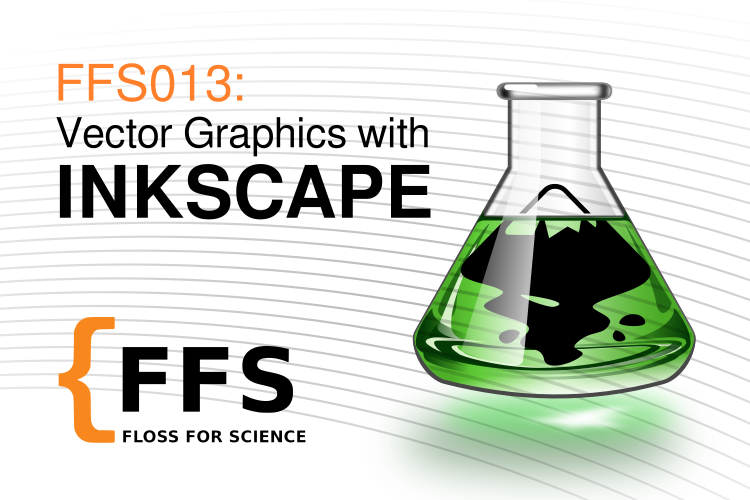
EP013 Vector Graphics with Inkscape
Outline
For episode 13, we interviewed Martin Owens, a British Free Software contractor based in Boston Massachusetts, during the 2018 Kiel Inkscape Hackfest, about the Inkscape project. After a brief presentation of Inkscape, we talked about the svg file format and the compatibility of Inkscape with other commercial proprietary offerings. He presented us a list of features planned for Inkscape 1.0, the next major version. We discussed about Inkscape in science and the wider importance of free software and open science. Follow us to be informed when we will release our next episode about the GNU image manipulation program aka GIMP.
About Inkscape:
A Free and Open Source SVG vector image editor available for multiple platforms. A popular way of creating physical objects, intricate visualisations and beautiful artworks.
About Martin Owens:
Martin is a British Free Software contractor based in Boston, Massachusetts.
Links
- Inkscape
- Martin’s inkscape profile
- Martin’s devianart profile
- Martin’s GitLab profile
- Martin’s email
Listen to this episode here or add our rss feed to your favourite podcast application. You can also download this episode as MP3 or OGG.
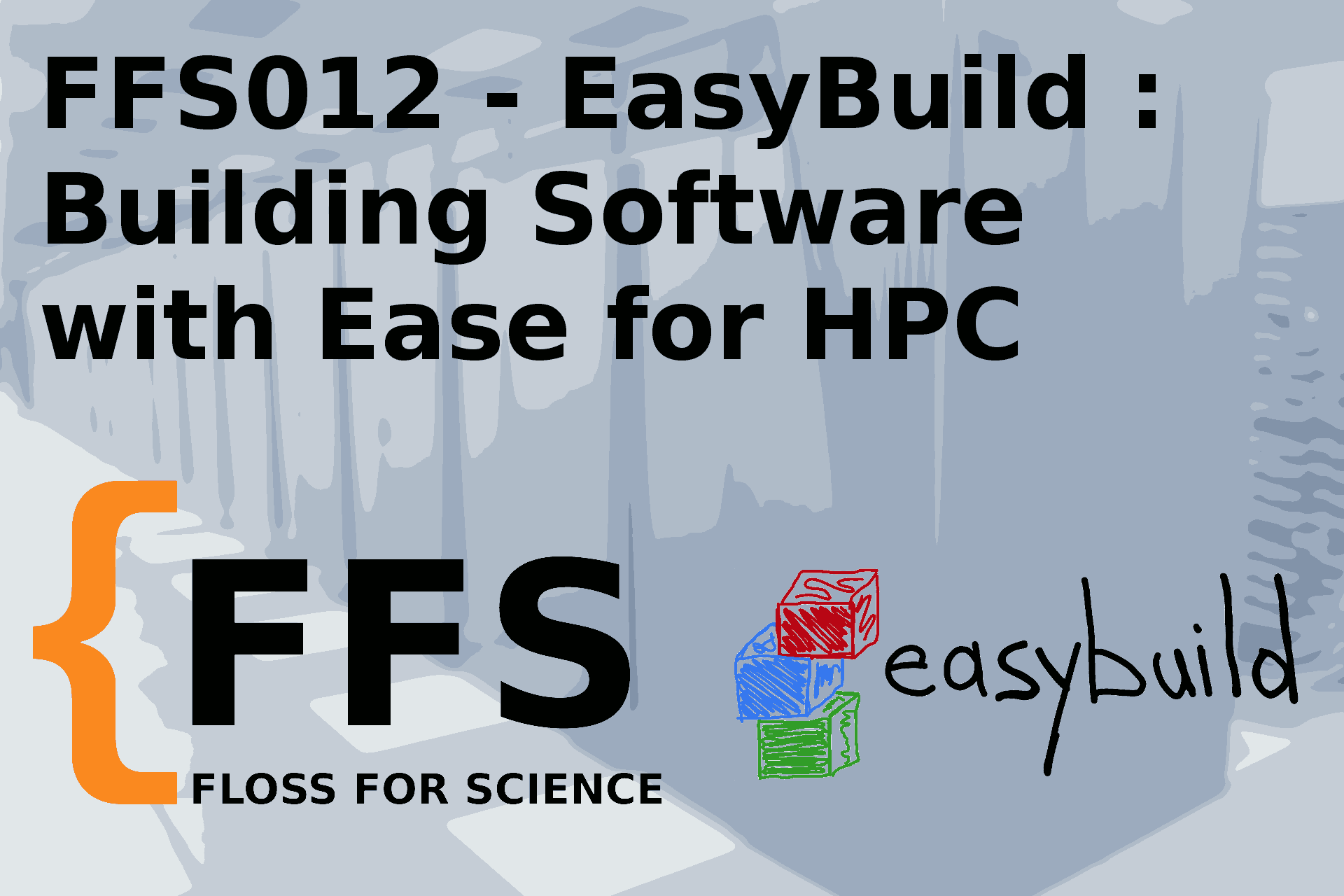
EP012 EasyBuild : Building Software with Ease for HPC
Outline
In Episode 12, we interviewed Kenneth Hoste, who is an HPC system administrator at Ghent University in Belgium. We talked about the problems that arise when installing scientific software on HPC systems and how the EasyBuild project that originated at HPC-UGent helps dealing with those problems, the impact of open source software in scientific research, as well as the yearly FOSDEM open source software meeting in Brussels where he is actively involved in various ways.
About Kenneth Hoste :
Kenneth Hoste, a.k.a. ‘boegel’, is a computer scientist and Free & Open Source Software (FOSS) enthusiast from Belgium. He holds a Masters (2005) and PhD (2010) in Computer Science from Ghent University. His dissertation topic was “Analysis, Estimation and Optimization of Computer System Performance Using Machine Learning”.
Since October 2010, he is a member of the HPC team at Ghent University (Belgium) where he is mainly responsible for user support & training. As a part of his job, he is also the lead developer and release manager of EasyBuild, a software build and installation framework for (scientific) software on High Performance Computing (HPC) systems.
In his free time, he is a family guy and a fan of loud music, frequently attending gigs and festivals. He enjoys helping people & sharing his expertise, and likes joking around. He has a weak spot for stickers.
For more details, we refer to his social media:
Links:
- Easybuild community @ github
- HPC-UGent team @ github
- How To Make Package Managers Cry” talk at FOSDEM’18
Listen to this episode here or add our rss feed to your favourite podcast application.
You can also download this episode as MP3 or OGG.
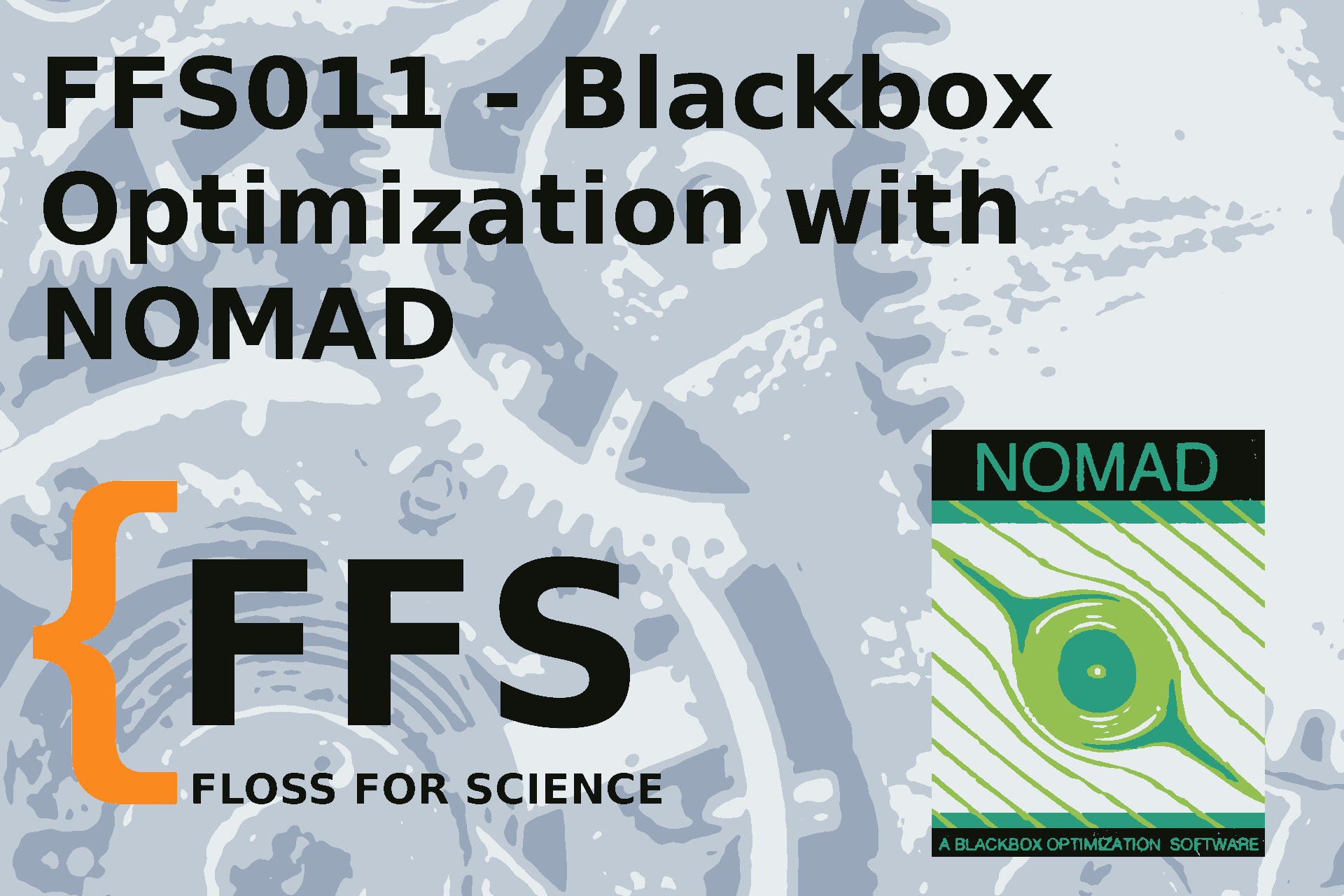
EP011 Blackbox Optimization with NOMAD
Outline
In Episode 11, we interviewed Sébastien Le Digabel about NOMAD a blackbox optimization software. A blackbox is a system which can be viewed in terms of its inputs and outputs, without any knowledge of its internal workings. NOMAD is a software for the optimization of such problems. It implements the Mesh Adaptive Direct Search (MADS) derivative-free optimization algorithm. NOMAD is free and intended to be easy to use. It is designed for solve real-world optimization problems from the industry. It works out of the box, as long as the objective and constraints are provided.
About Sébastien Le Digabel:
Sébastien Le Digabel received the M.Sc.A. degree and the Ph.D. degree in applied mathematics from Polytechnique Montreal, Montreal, Quebec, Canada in 2002 and 2008 respectively, and worked as a postdoctoral fellow at the IBM Watson Research Center and the University of Chicago in 2010 and 2011. He is currently an Associate Professor in the Department of Mathematics and Industrial Engineering at Polytechnique Montreal and a regular member of the GERAD research center. His research interests include the analysis and development of algorithms for derivative-free and blackbox optimization, and the design of related software. All of his work on derivative-free optimization is included in the NOMAD software, a free package for blackbox optimization.
Links:
- Nomad website
- Le Digabel, S., 2011. Algorithm 909: NOMAD: Nonlinear Optimization with the MADS algorithm. ACM Transactions on Mathematical Software 37 (4), 44:1–44:15. DOI
- NOMAD’s user guide
Listen to this episode here or add our rss feed to your favourite podcast application. You can also download this episode as MP3 or OGG.
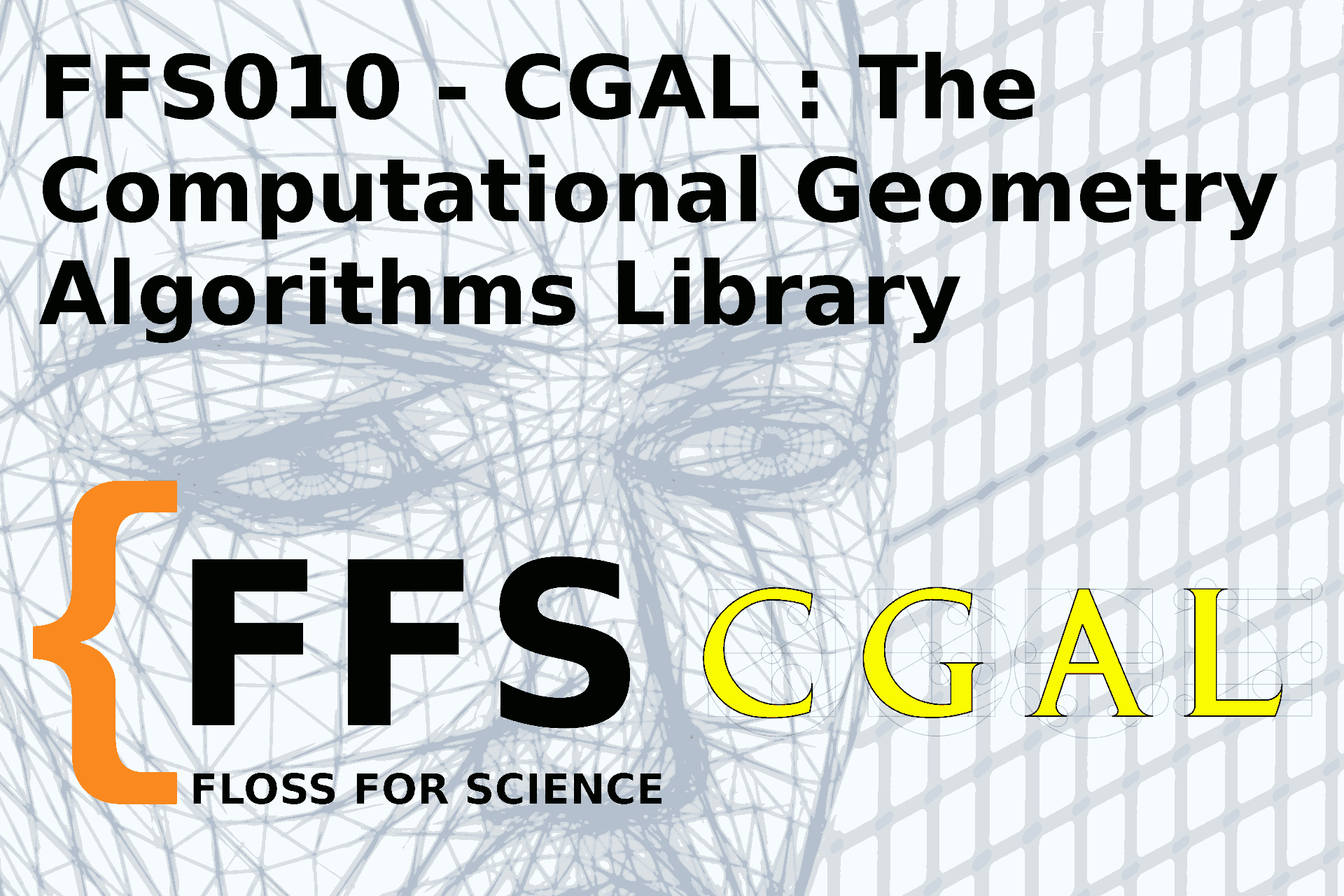
EP010 CGAL : The Computational Geometry Algorithms Library
Outline
In Episode 10, we interviewed Sébastien Loriot about CGAL. A software project that provides easy access to efficient and reliable geometric algorithms in the form of a C++ library. CGAL is used in various areas needing geometric computation, such as geographic information systems, computer aided design, molecular biology, medical imaging, computer graphics, and robotics.
The library offers data structures and algorithms like triangulations, Voronoi diagrams, Boolean operations on polygons and polyhedra, point set processing, arrangements of curves, surface and volume mesh generation, geometry processing, alpha shapes, convex hull algorithms, shape analysis, AABB and KD trees…
Check out for a detailed list of available modules.
About Sébastien Loriot:
Sébastien is co-author of several CGAL packages and is also part of the editorial board of the library. He is mainly working on various operations on polyhedral surfaces within GeometryFactory.
Links:
- The CGAL Project. CGAL User and Reference Manual. CGAL Editorial Board, 4.12.1 edition, 2018.
- CGAL@github
- CGAL Open Source Project Rules and Procedures.
- A comprehensive list of projects using CGAL in various fields of art and science.
Listen to this episode here or add our rss feed to your favourite podcast application.
You can also download this episode as MP3 or OGG.
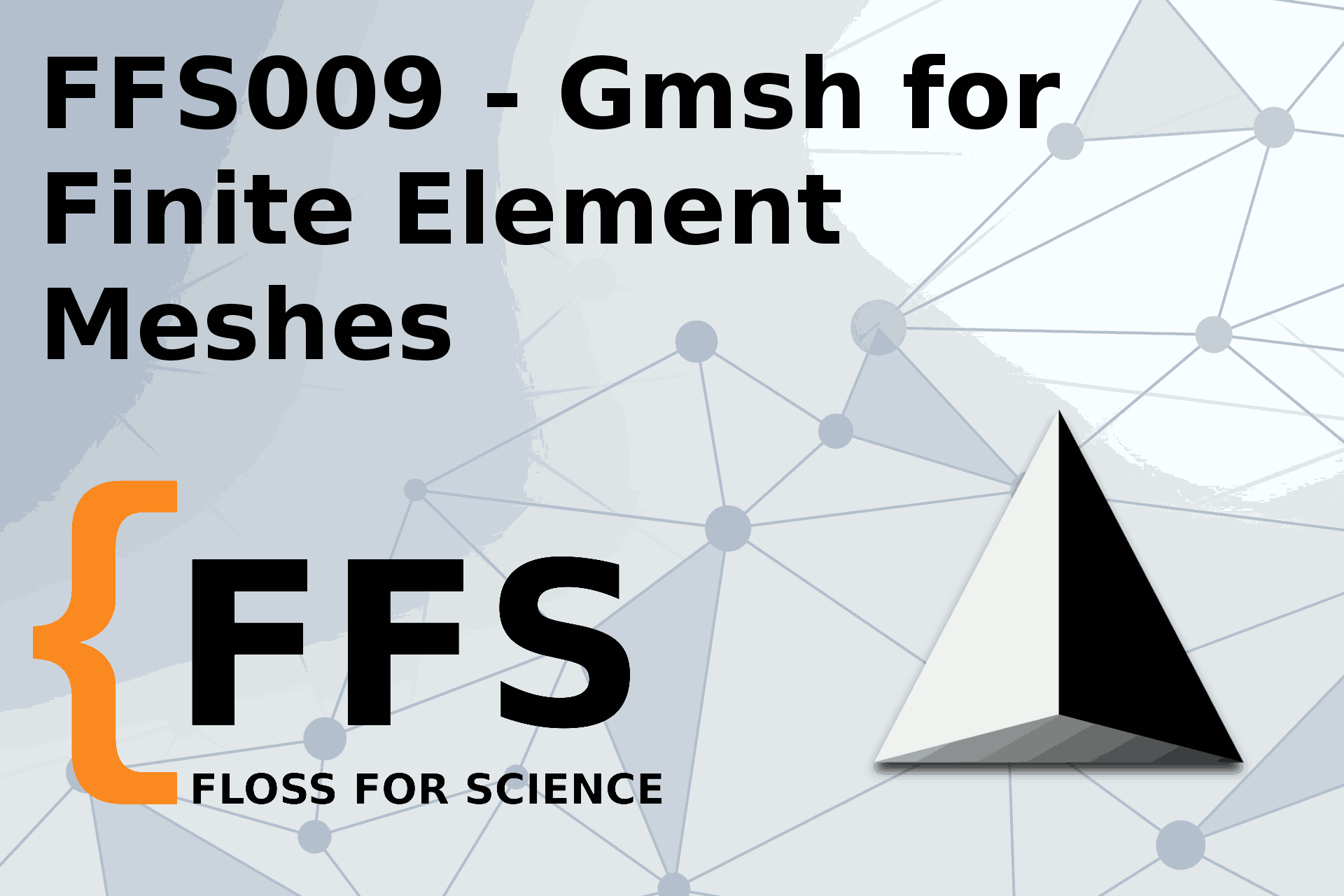
EP009 Finite element meshing with gmsh
Outline
In Episode 9, we interviewed Christophe Geuzaine about gmsh, a three-dimensional finite element mesh generator with built-in pre- and post-processing facilities. Gmsh is a free 3D finite element mesh generator with a built-in CAD engine and post-processor. Its design goal is to provide a fast, light and user-friendly meshing tool with parametric input and advanced visualization capabilities. Gmsh is built around four modules: geometry, mesh, solver and post-processing. The specification of any input to these modules is done either interactively using the graphical user interface, in ASCII text files using Gmsh’s own scripting language (.geo files), or using the C++, C, Python or Julia API.
About Christophe Geuzaine:
Christophe Geuzaine received his PhD degree in 2001 from the Faculty of Applied Sciences at the University of Liège in Belgium. After post-doctoral positions at the California Institute of Technology and with the Belgian National Science Foundation, he became an assistant professor of Mathematics at Case Western Reserve University in the US in 2005. In 2007 he came back to the University of Liège, where he is now full professor in the department of Electrical Engineering and Computer Science. He is the founder and head of the Applied and Computational Electromagnetics research group within the Montefiore Institute.
Prof. Geuzaine’s research encompasses modeling, analysis, algorithm development, and simulation for problems arising in various areas of engineering and science, with current applications in electromagnetic, biomedical and geophysical problems. He has authored numerous papers in the fields of scientific computing and is the co-creator of the popular open source mesh generator Gmsh and the multi-physics finite element solver GetDP.
Links:
- Gmsh @ selfhosted gitlab
- @OnelabModels on Twitter
- Public mailing list for Gmsh users
- C. Geuzaine, J.-F. Remacle, Gmsh: A 3-d finite element mesh generator with built-in pre-and post- processing facilities, International journal for numerical methods in engineering 79 (11) (2009) 1309–1331. doi:doi.org/10.1002/nme.2579
Listen to this episode here or add our rss feed to your favourite podcast application.
You can also download this episode as MP3 or OGG.
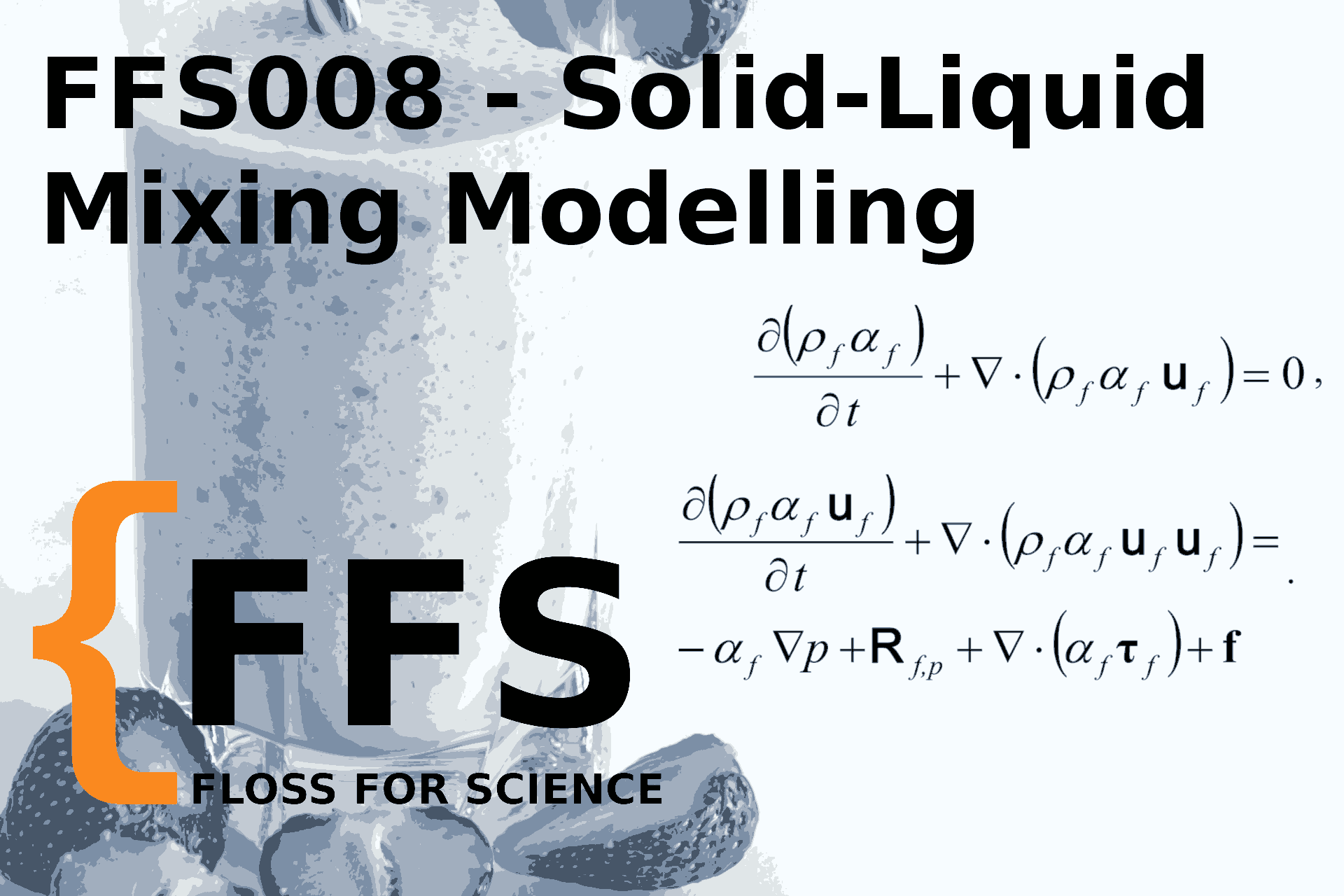
EP008 Solid-Liquid Mixing Modelling
Outline
For episode 8, we interviewed Bruno Blais about his utilization of open source software in his research about solid-liquid mixing. We started our conversation by talking about the different kinds of software packages he uses in his simulation workflow. We then asked him why and when he has decided to use FLOSS tools in is research. Following that, we talked about his philosophical and practical reasons to use FLOSS. He then shared with us how he contributes to the software he is using in his daily research. Finally, we talked with him about the significance of FLOSS for the openness of science and how it affects the society as a whole.
This episode is the first of series about finite element simulations, meshing and geometry analysis. Follow us to be informed when we will release our next episode about the open source meshing tool GMSH.
About Bruno Blais:
Bruno Blais is a Research Officer with the Automotive and Surface Transportation Portfolio of the National Research Council of Canada (NRC AST) and an associate professor at the Department of Chemical Engineering at Polytechnique Montreal. He has earned a B. Eng. in Chemical Engineering, a Grande École Engineering Diploma from ENSTA Paristech, a master in Fundamental Fluid Mechanics from ENSTA and a Ph.D. in Chemical Engineering from Polytechnique Montreal. Bruno is a Vanier Graduate Scholar (2012-2016) and has received the Govenor’s General gold academic medal for his thesis work on numerical modelling of multiphase flow. He has also received the best thesis award from Ecole Polytechnique (2017) and the North American Mixing Forum (2016-2017). Bruno has also received other recognition such as the Da Vinci Profile of Ecole Polytechnique (2012) and the Master Île-de-France international Scholarship (2011-2012). Bruno’s expertise lies in the development, verification, and validation of high performance digital models for fluid mechanics, heat transfer, and complex multi-physical and multi-scale phenomena. His research interests are in computational fluid mechanics (CFD), reacting flow, granular and solid-fluid flow modelling, topology optimization as well as high-performance computing on distributed high-performance architecture and on GPU. He has been an active collaborator of the CFDEM project, an open source platform for granular and solid-fluid flows, since 2013.
Links
Listen to this episode here or add our rss feed to your favourite podcast application.
You can also download this episode as MP3 or OGG. .

EP007 A Guide to Software Licenses in Science
Outline
For Episode 7, we interviewed Karl Fogel and James Vasile about the importance of software licenses for scientists. The discussion was inspired from Chapter 9: Legal Matters: Licenses, Copyrights, Trademarks and Patents of Karl’s book: Producing Open Source Software - How to Run a Successful Free Software Project. Choosing a license for ones open source project is essential and we discussed why one should ship their scientific open source code with a license. In addition, we talked about the implications of providing a license and the legal aspects of licenses. Another aspect was open source license compatibility for the integration of libraries to an existing project. We also had a discussion in regards to the expectations of academic developers.
About Karl Fogel:
Karl Fogel is an open source software developer, author, and consultant. In 2005 he wrote “Producing Open Source Software: How to Run a Successful Free Software Project” (O’Reilly Media, online at producingoss.com, based partly on his experiences in the Subversion project. He has worked at CollabNet, Google, Canonical, O’Reilly Media, and Code for America / Civic Commons, all as an open source specialist. He is now a partner at Open Tech Strategies, LLC, where he helps organizations launch and engage with open source projects. He is also an Open Internet Tools Project Fellow at the New America Foundation, a former member of the board of directors of the Open Source Initative, and a member of the Apache Software Foundation. He is @kfogel on Identi.ca and Twitter, and his home page is red-bean.com/kfogel.
About James Vasile:
James Vasile has fifteen years experience as a user, developer, advocate and advisor in the free and open source software world. His expertise is in software licensing and community-building, as well as non-profit and small business startup. He focuses on free software and open source production, although his work and interests often take him far beyond the world of software. Much of what James does involves teaching people how to build successful businesses around free software and ensuring licensing alignment in multisource FOSS stacks.
Previously, James was a Senior Fellow at the Software Freedom Law Center, where he advised and supported a wide range of free software efforts. A former Director of the FreedomBox Foundation, James remains active in several technology development efforts.
James was a founding board member of Open Source Matters, the non-profit behind Joomla. He began his career at Cravath, Swaine & Moore. You can learn more about him from his GitHub activity and his LinkedIn profile, or by connecting with him on Twitter.
Links:
- Fogel, K. (2005). Producing open source software: How to run a successful free software project. “ O’Reilly Media, Inc.”. Link
- Short notice: Some Common Issues in Open Source Licensing. Link
- More resources about starting and managing open source projects. Link
Listen to this episode here or add our rss feed to your favourite podcast application.
You can also download this episode as MP3 or OGG
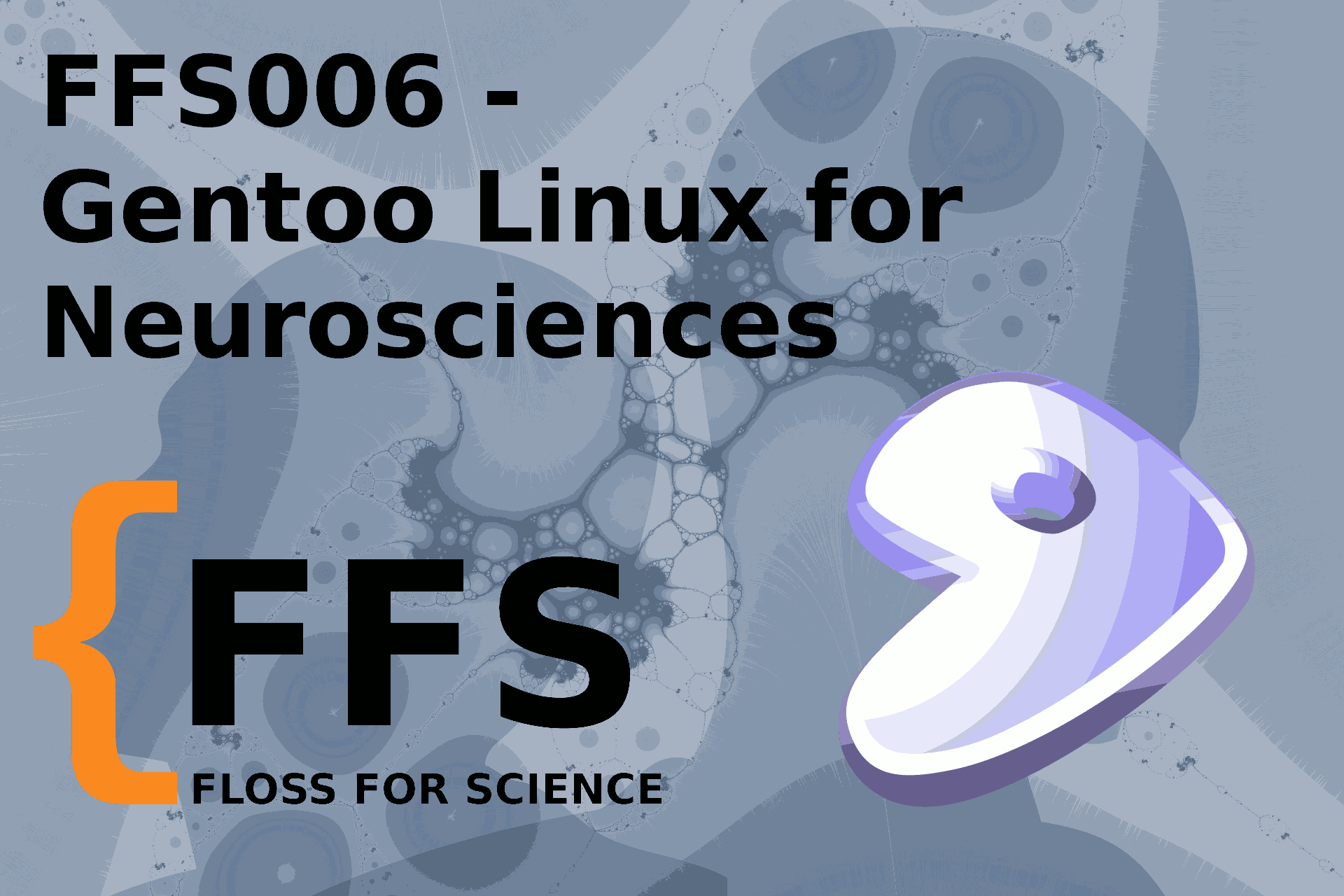
EP006 Gentoo Linux for Neurosciences
Outline
In Episode 6, we interviewed Christian Horea about the NeuroGentoo Overlay for Gentoo Linux which includes specific packages for Neuroscience. With this distribution many of the challenges in neuroscience software management; including: system replicability, system documentation, data analysis reproducibility, fine-grained dependency management, easy control over compilation options, and seamless access to cutting-edge software releases, are addressed. Fore more details we refer to his publication: Gentoo Linux for Neuroscience - a replicable, flexible, scalable, rolling-release environment that provides direct access to development software.
About Christian Horea:
Christian Horea is a Doctoral Researcher at the ETH Zurich, where he studies the ability of psychotropic drugs to modulate brain function in healthy animals. He has previously engaged in research at the University of Heidelberg, University of Oxford, Max Planck Institute for Medical Research, University of Oldenburg, and the Sechenov Institute of Evolutionary Physiology and Biochemistry of the Russian Academy of Sciences. His work has spanned the gamut of neuroscience from electrophysiology and molecular biology all the way to experimental psychology — and includes an extensive excursion into the world of Linux, Python, and software management. He has written many Free and Open Source Software packages for data analysis, metadata and lab book management, reproducible self-publishing, and data repositing. We join him on part of this exciting journey, to learn about an initiative he started — NeuroGentoo — and how he sees Free and Open Source Software, freedom in choosing and picking such software, and transparency in the choices having been made, as instrumental to the neuroscience of the present and future, and how Gentoo Linux (perhaps uniquely) makes tackling these challenges possible.
For more details, we refer to his social media:
Links:
- NeuroGentoo Overlay @ github
- Christian, Horea & Saab, Bechara & Rudin, Markus. (2017). Gentoo Linux for Neuroscience - a replicable, flexible, scalable, rolling-release environment that provides direct access to development software. Research Ideas and Outcomes. 3. e12095. 10.3897/rio.3.e12095.
Listen to this episode here or add our rss feed to your favourite podcast application.
You can download this episode as MP3 or OGG. In addition, you can listen to the unedited recording of this interview here.
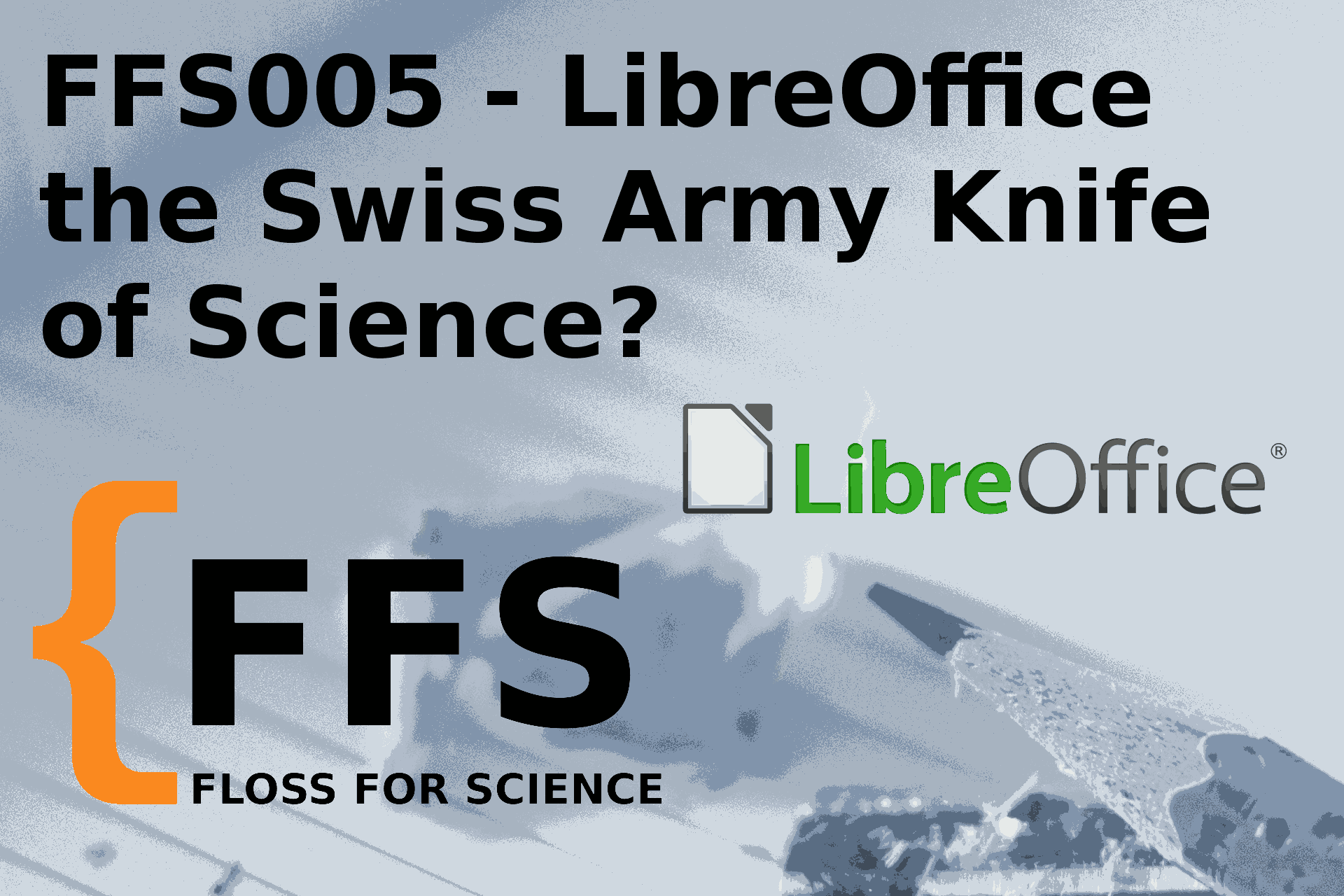
EP005 LibreOffice the Swiss Army Knife of Science?
Outline
In Episode 5, we interview Katarina Behrens, a consultant and software developers of LibreOffice, LibreOffice extensions and related libraries working at CIB Group of Companies. We discuss her involvement with The Document Foundation, the capabilities of the LibreOffice suite and why an open source office suite is relevant for scientists.
About Katarina Behrens:
Katarina Behrens (aka Bubli) is one of LibreOffice core developers.
She got involved with free and open-source software more than a decade ago,
contributing l10n to Debian project. Employed by SUSE later, she worked on
YaST, openSUSE’s installation and configuration tool and in 2010, she became
member of SUSE LibreOffice team.
After a brief intermezzo in computer security business, she was hired by CIB (a German company delivering document management systems) in 2015 to work on LibreOffice full-time again. Apart from squashing LibreOffice bugs that disturb CIB customers’ good night’s sleep, she engages in mentoring (Google Summer of Code) and finds seeing her mentees succeed to be an ultimately rewarding experience.
Links
You can get more information about LibreOffice using this link. If you want to get involved in the project you can get more information’s here and a video can also be found on Youtube.
Listen to this episode here or add our rss feed to your favourite podcast application.
For the definition of Denkmalschutz, you can consult this link
You can also download this episode as MP3 or OGG.).
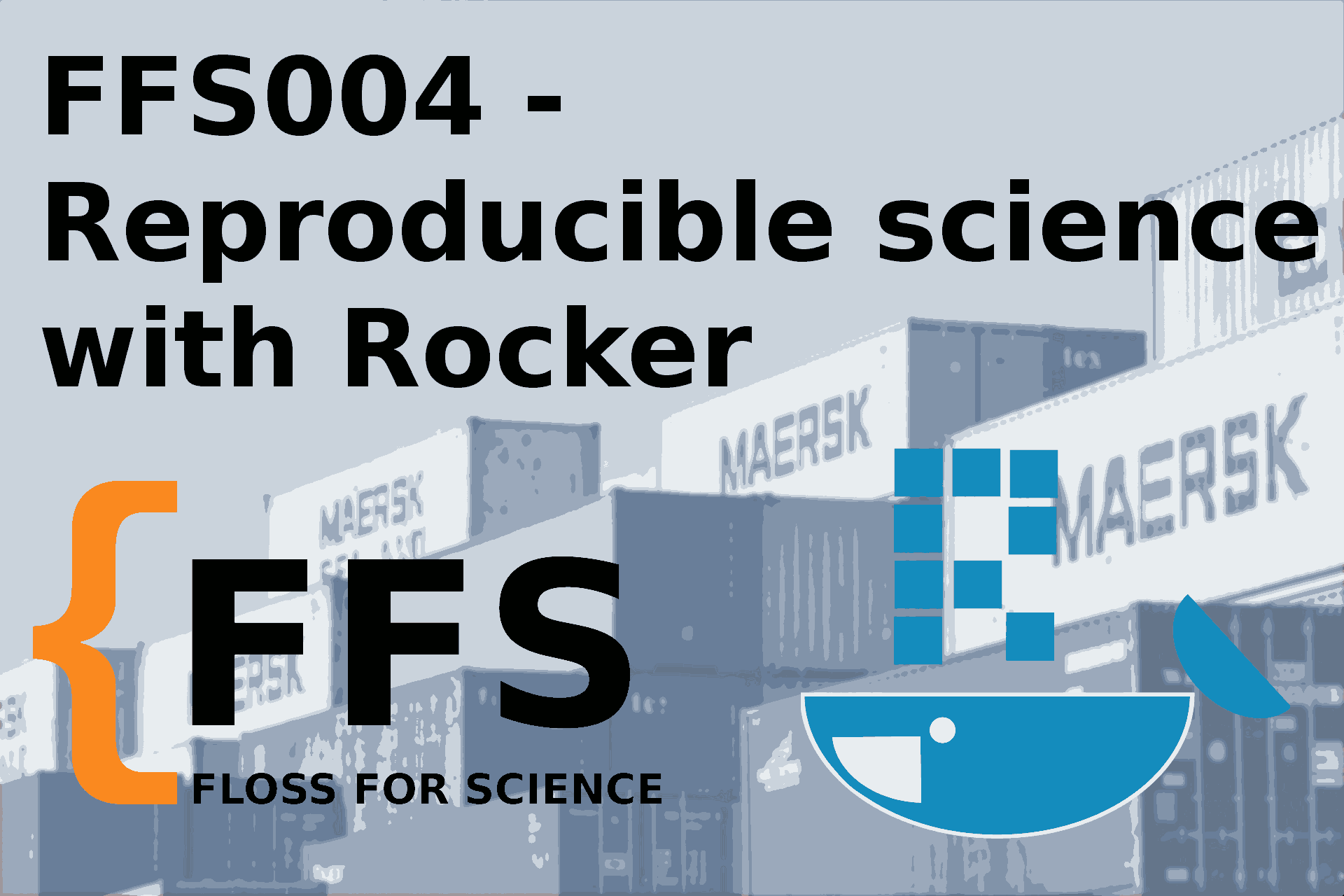
EP004 Reproducible science with Rocker
Outline
In Episode 4, we interviewed Carl Boettinger about Rocker:
Rocker is an open source community project providing Docker containers for R users. Rocker containers help users to easily share and deploy customized and reproducible R environments on local and remote machines. Rocker images have been downloaded over three million times and are maintained by Carl Boettiger & Dirk Eddelbuettel with many contributions from the user community.
About Carl Boettinger
Carl Boettinger is an Assistant Professor in the Department of Environmental Science, Policy and Management at UC Berkeley. He works on problems in ecological forecasting and decision making under uncertainty, with applications for global change, conservation and natural resource management. He is particularly interested in how we can predict or manage ecological systems that may experience regime shifts: sudden and dramatic changes that challenge both our models and available data. The rapid expansion in both computational power and the available ecological and environmental data enables and requires new mathematical, statistical and computational approaches to these questions. Ecology has much to learn about what are and are not useful from advances in informatics & computer science, just as it has from statistics and mathematics. Traditional approaches to ecological modeling and resource management such as stochastic dynamic systems, Bayesian inference, and optimal control theory must be adapted both to take advantage of all available data while also dealing with its imperfections. His approach blends ecological theory with the synthesis of heterogeneous data and the development of software – a combination now recognized as data science.
Links
Listen to this episode here or add our rss feed to your favourite podcast application.
You can also download this episode as MP3 or OGG.
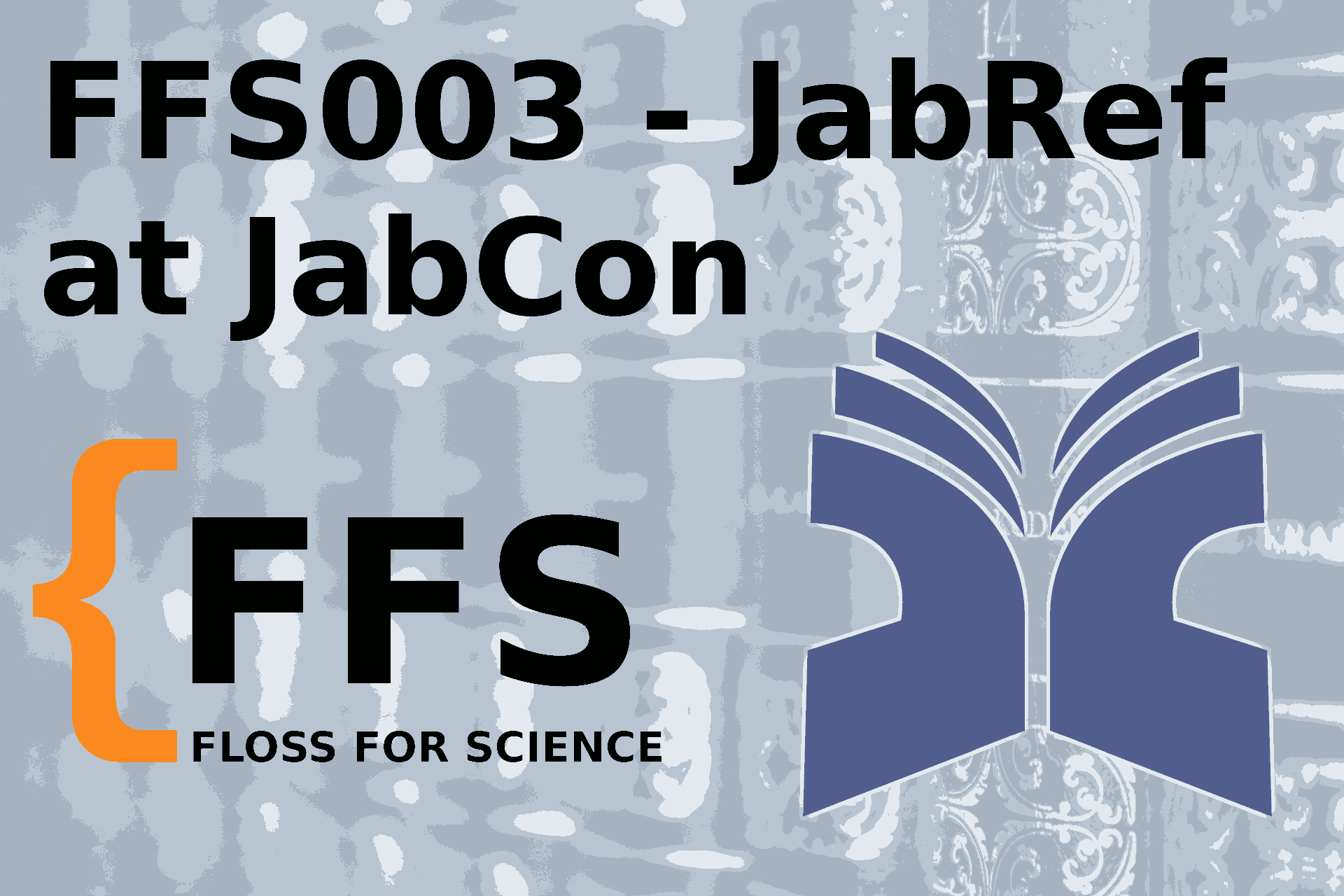
EP003 JabRef at JabCon
Outline
In Episode 3, we interview Oliver Kopp and Jörg Lenhard about Jabref:
JabRef is an open-source, cross-platform citation and reference management tool licensed under the MIT license, which works on Windows, Linux and Mac OS X. It is available free of charge and is actively developed. JabRef supports you in every step of your research work. Stay on top of your literature: JabRef helps you to collect and organize sources, find the paper you need and discover the latest research. The native file format used by JabRef is BibTeX, the standard LaTeX bibliography format. Bibliographies generated by LaTeX and BibTeX from a BibTeX file can be formatted to suit any reference list specifications by the use of different BibTeX and BibLaTeX style files.
About Oliver Koop :
Oliver Kopp studied Software Engineering and defended his PhD in the field of cross-partner business process management. Currently, he researches as PostDoc in the area of architectural decision records. For him, the key success factor for turning research into practice is sustainable open source software. Thus, it is a natural fit that he is project lead at Eclipse Winery, which provides a framework for research on modeling TOSCA-based (Cloud) applications.
About Jörg Lenhard :
Jörg Lenhard is a post-doctoral research fellow at the Software Engineering Research Group of Karlstad University, Sweden. He obtained his PhD in Computer Science from the University of Bamberg, Germany, where he also completed his Bachelor and Master studies, along with several exchanges to the University of Skövde and the Blekinge Institute of Technology in Sweden. Jörg’s passion lies in the development of high-quality software, which is where his research and teaching activities are centered. This is also the reason why he participates in open source software development and JabRef. Next to his academic publications, he recently authored a text book on code quality for Java beginners titled Java by Comparison: Become a Java Craftsman in 70 Examples.
Links
Listen to this episode here or add our rss feed to your favourite podcast application.
You can also download this episode as MP3 or OGG.
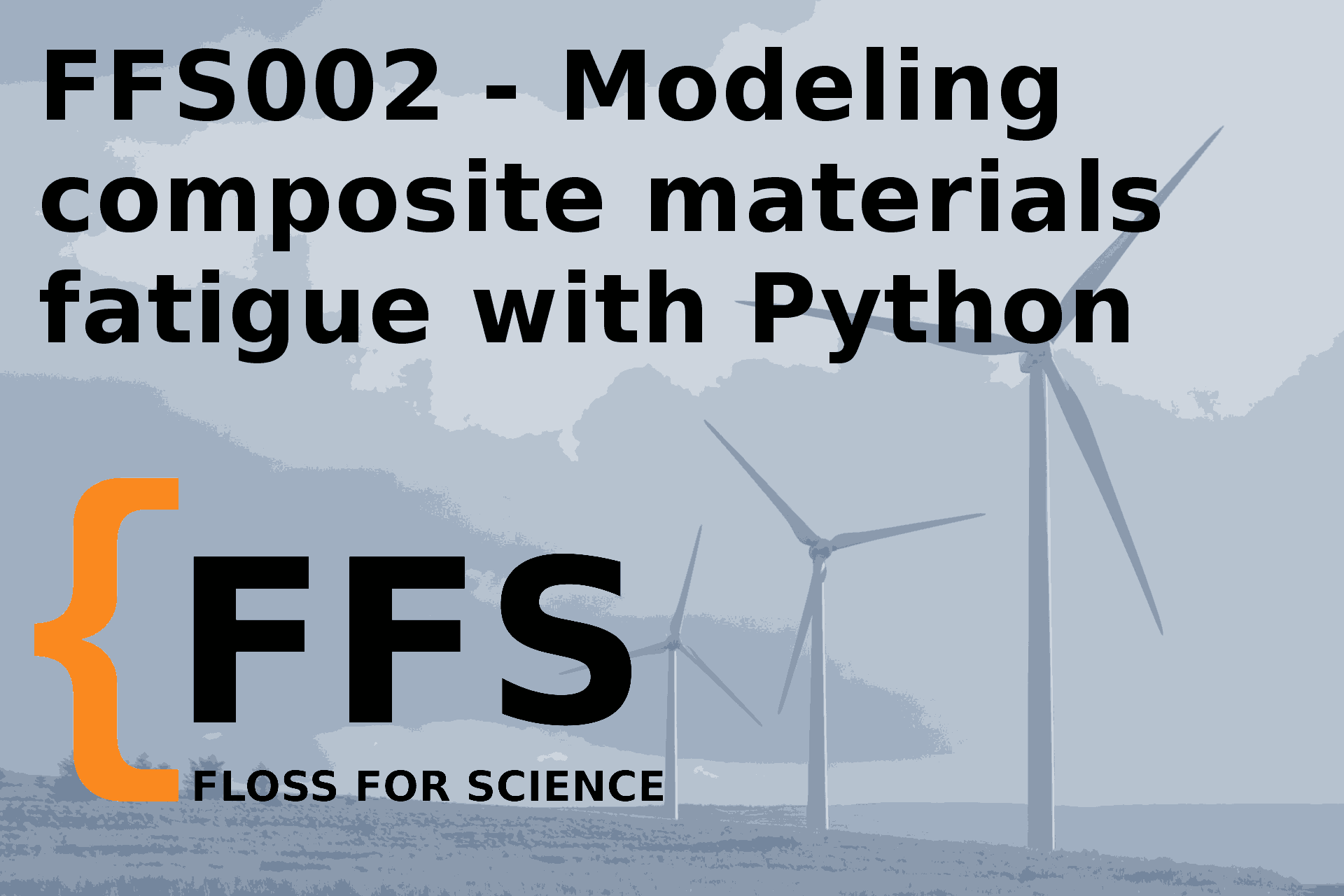
EP002 Modeling composite materials fatigue with Python
Outline
In Episode 2, we interview Laurent Cormier, a research associate at the École de Technologie Supérieure in Montréal. He introduces us to his past research regarding the evaluation of the fatigue life of composite materials and the predictive model he developed with Python. He also share with us his scientific perspective on FLOSS and tools he uses in his research workflow.
About Laurent Cormier :
Laurent Cormier owns a Bachelor’s degree (2006) and a research Master’s degree (2009) in mechanical engineering and received his Ph.D in engineering in 2017 from the École de technologie supérieure (ETS) in Montréal. He currently is a postdoctoral researcher working on high voltage capacitor manufacturing technology, a research associate in composite materials and a lecturer at the same institution.
His previous research topics include experimental characterization and analytical modeling of temperature and northern climates’ effects on the static strength, fatigue durability and viscoelastic behaviour of composites. These research topics were part of multiple projects, including the Wind Energy Strategic Network (WESNet) from the Natural Sciences and Engineering Research Council of Canada (NSERC), the Upwind program from the European Commission Sixth Framework Programme and industrial partnerships.
He also has a strong interest in Science, its methods, its philosophy and the transmission of knowledge. Photography, literature and politics are also part of his broader interests.
Links
Listen to this episode here or add our rss feed to your favourite podcast application.
You can also download this episode as MP3 or OGG.

EP001 Introduction to the FLOSS for Science podcast
Outline
In this episode the two hosts David Brassard and Patrick Diehl of FLOSS for Science introduce themselves and they explain the aims of this podcast.
Links
Listen this episode here or add our rss feed to your favourite podcast app:









